
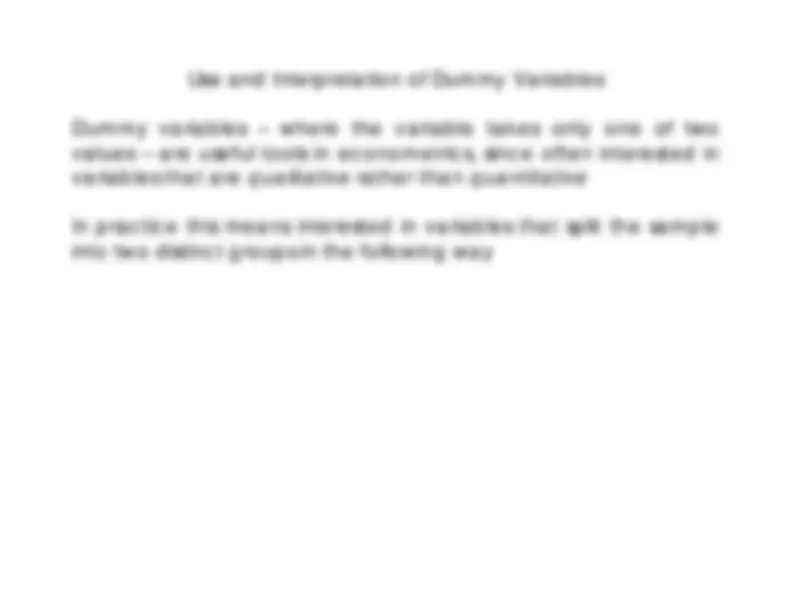
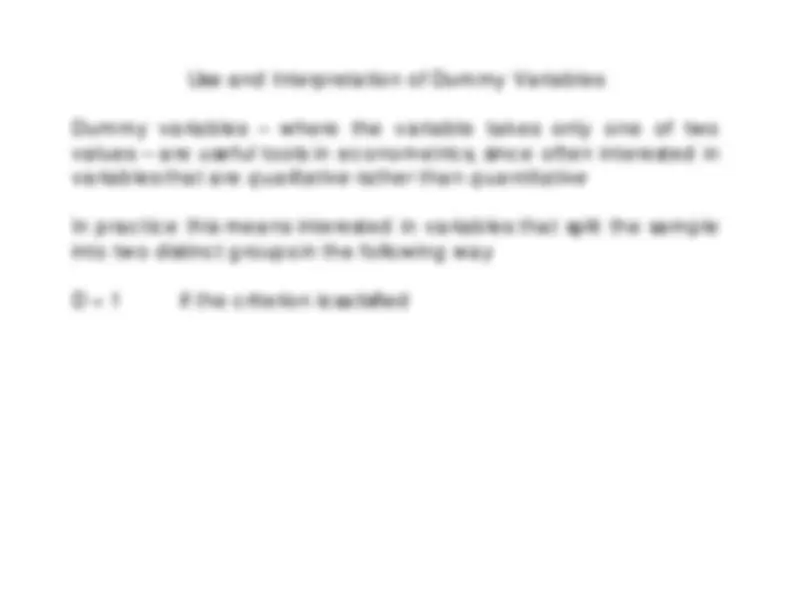
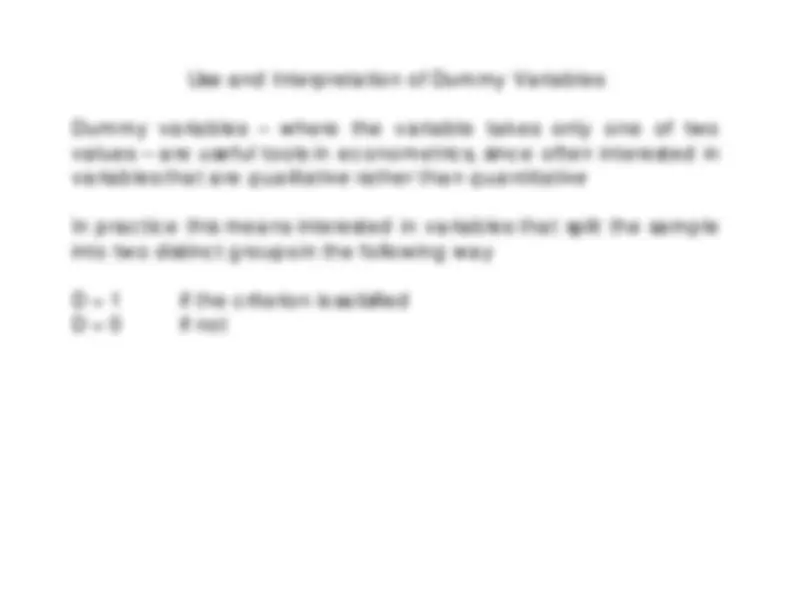
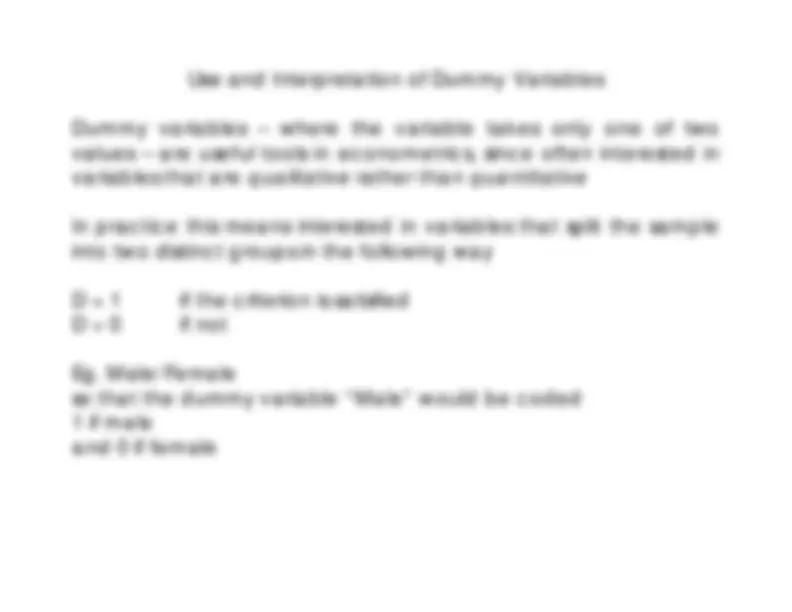
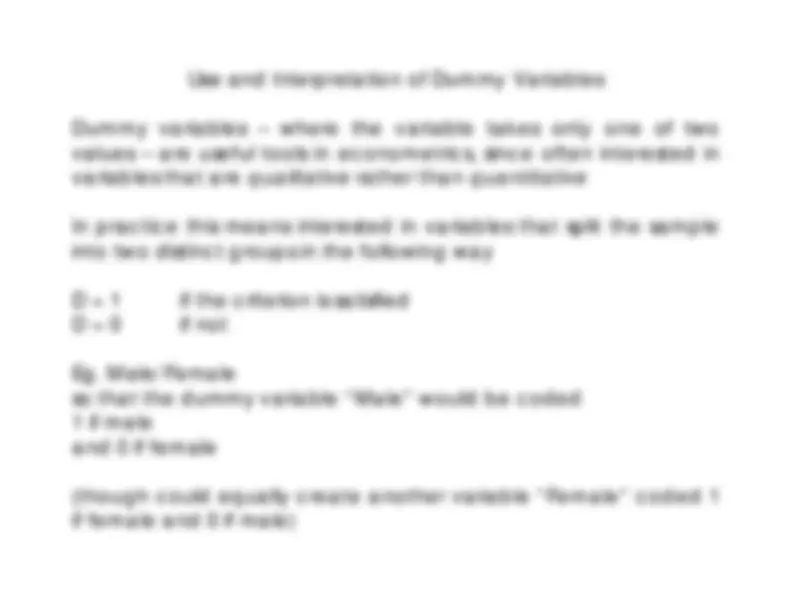

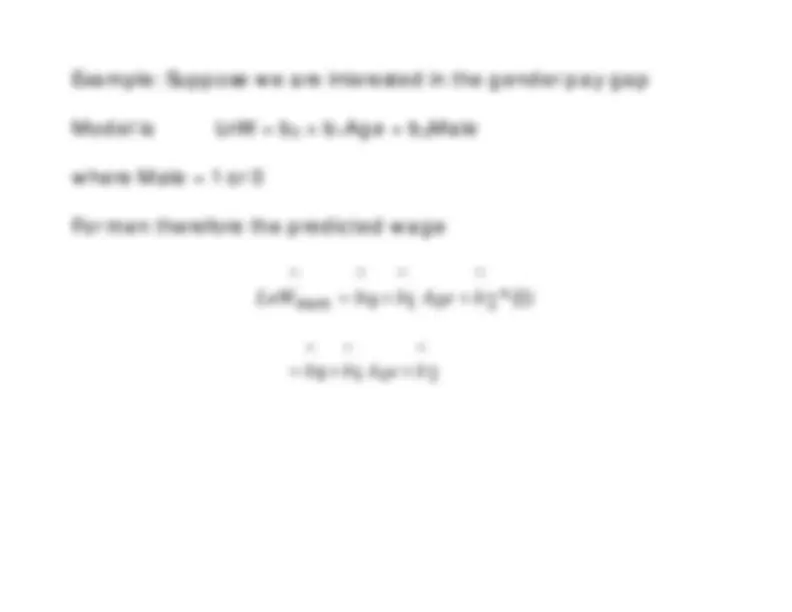
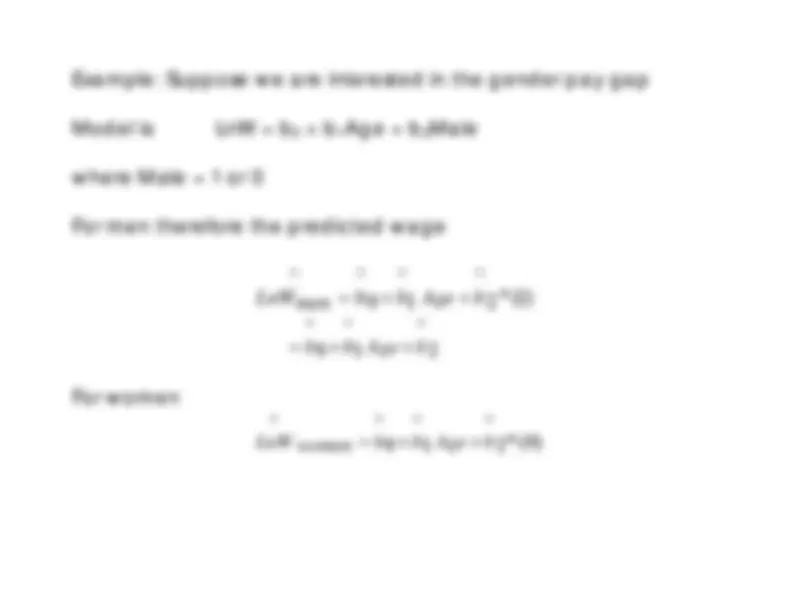
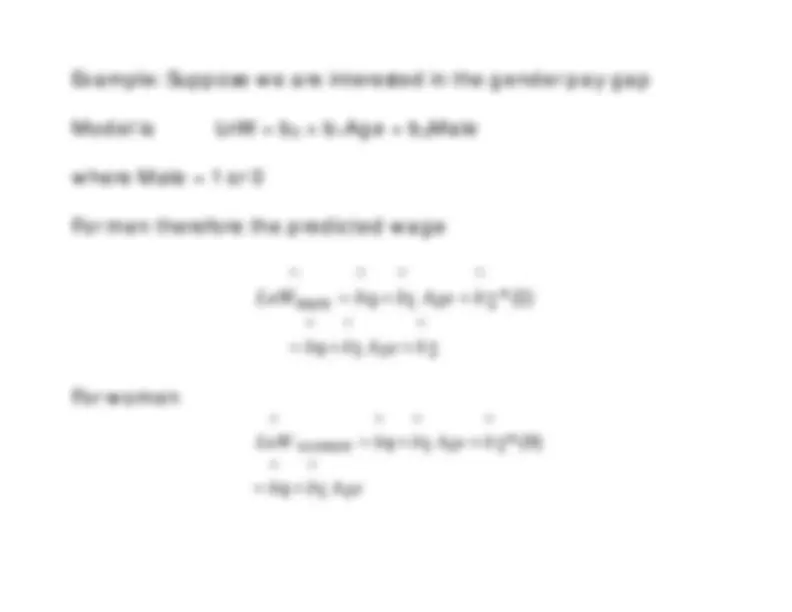
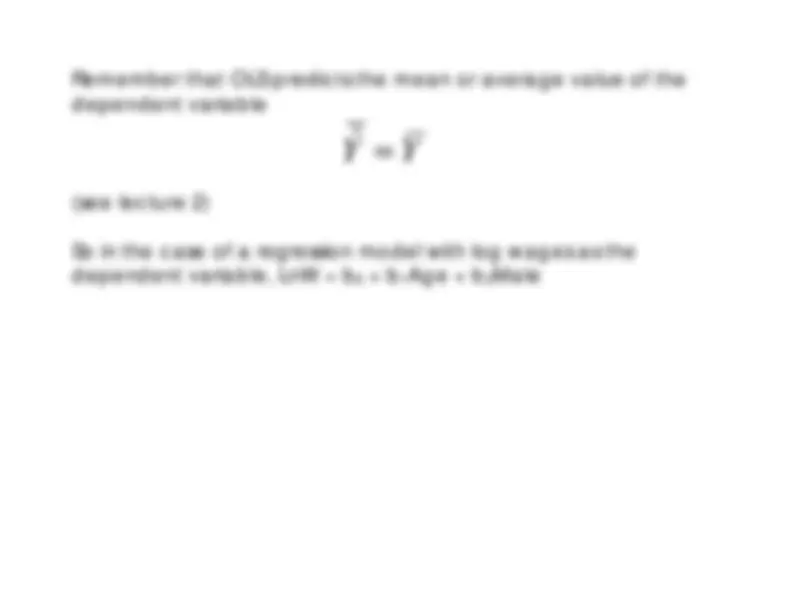
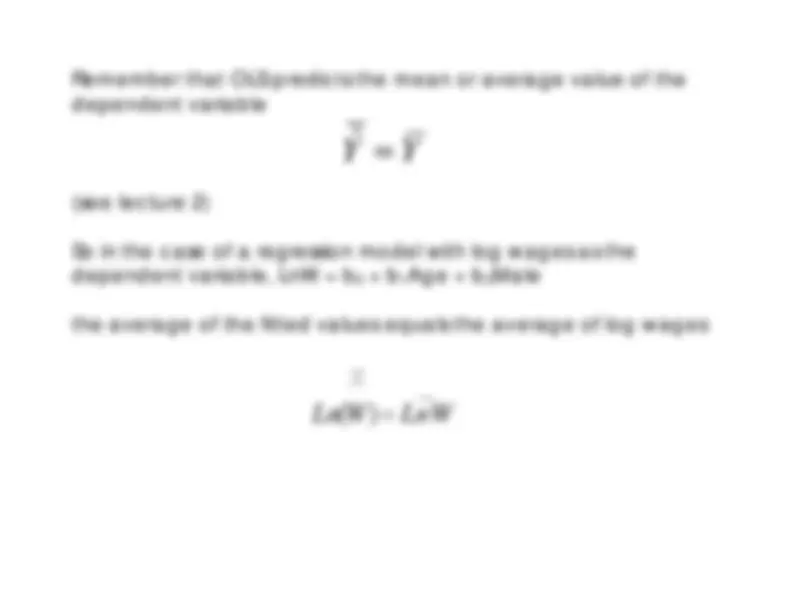

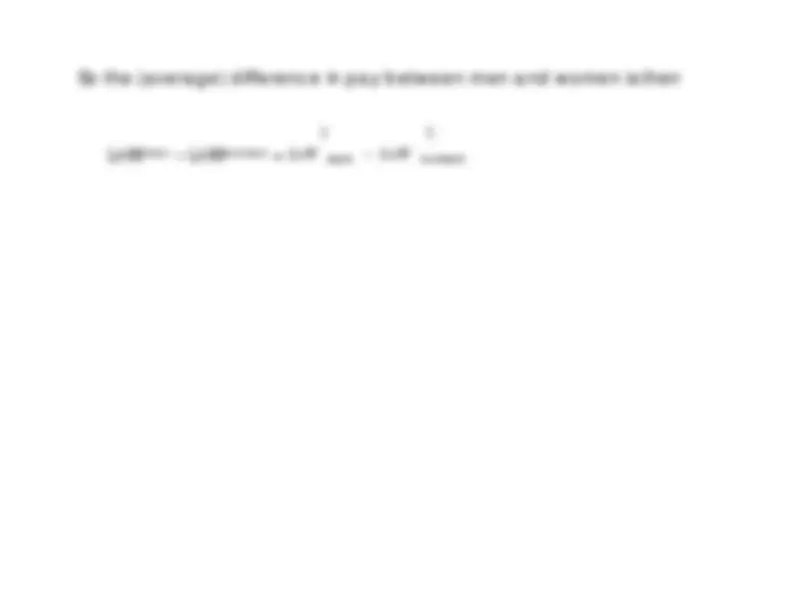
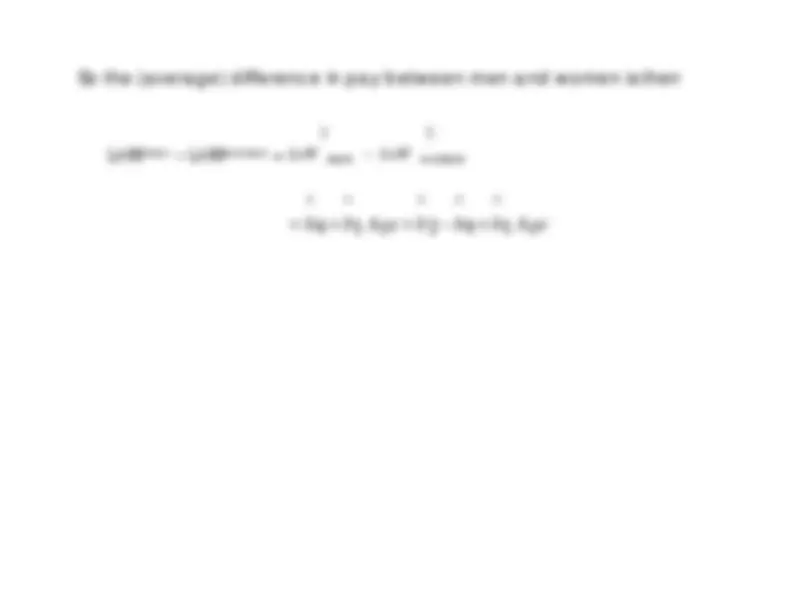
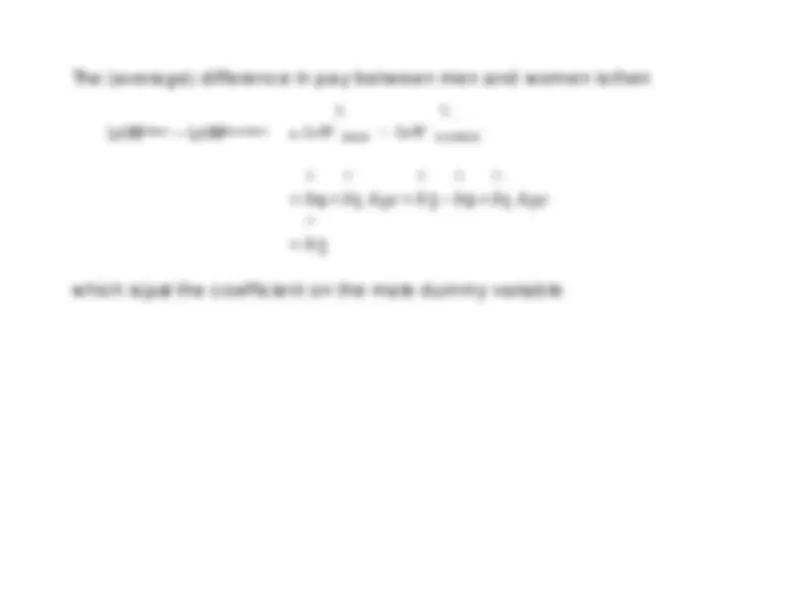
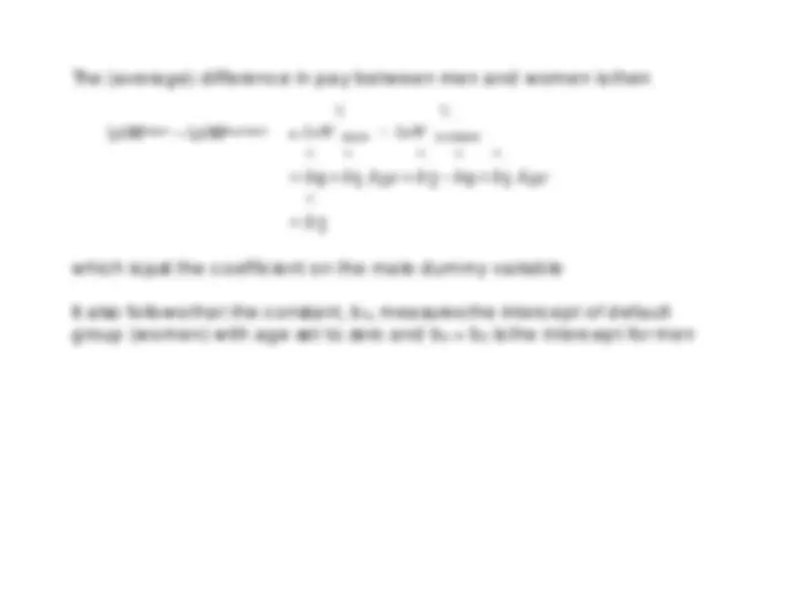
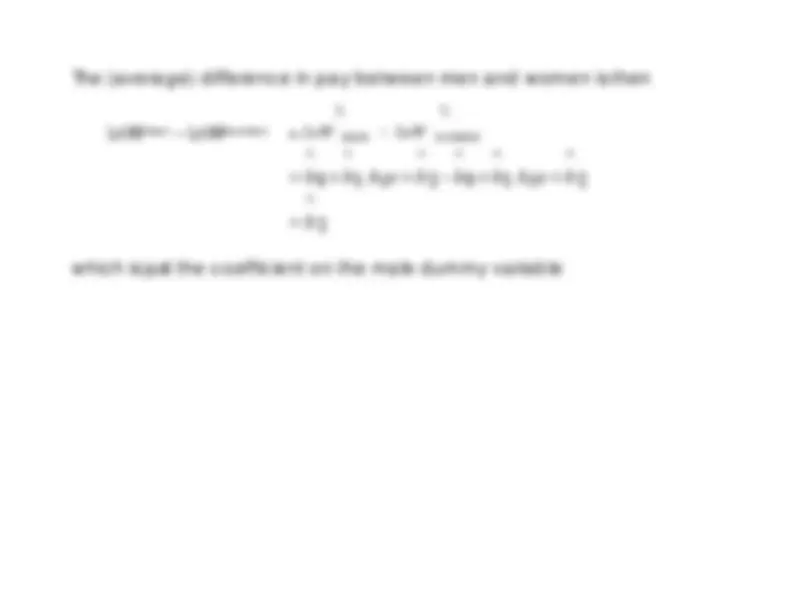


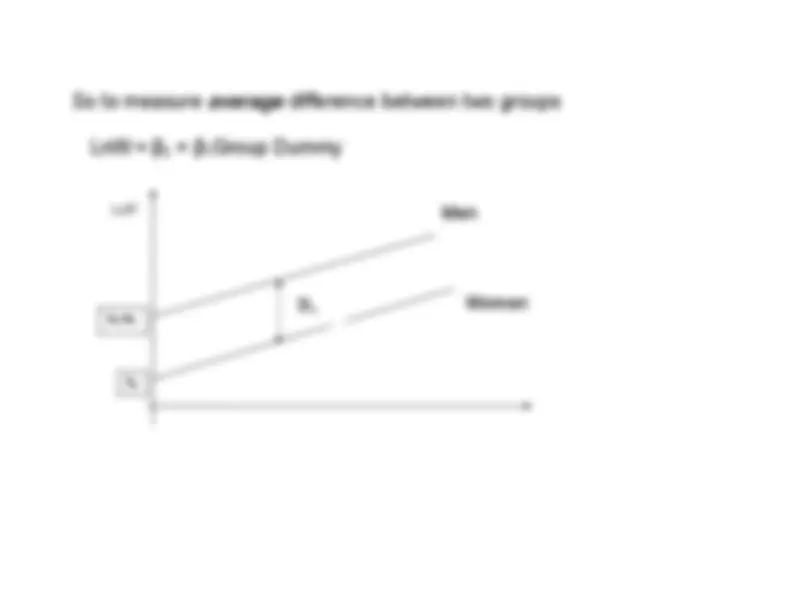
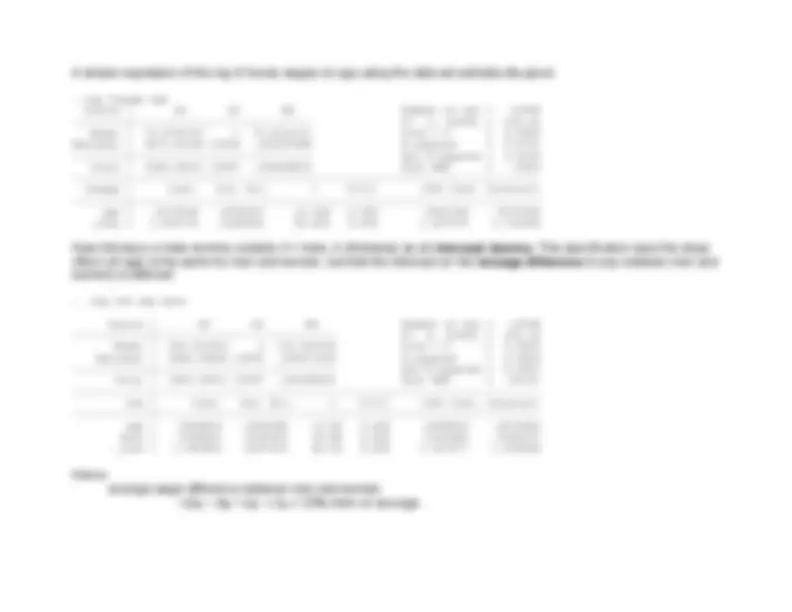
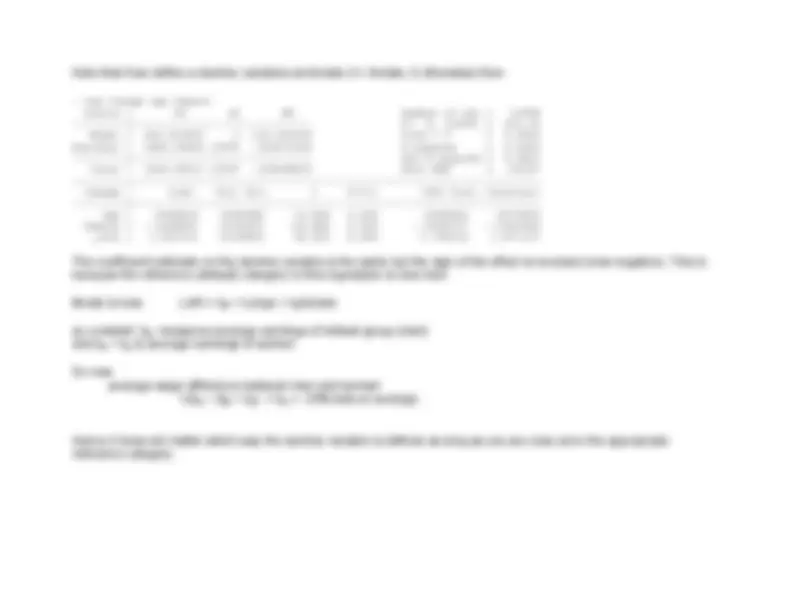
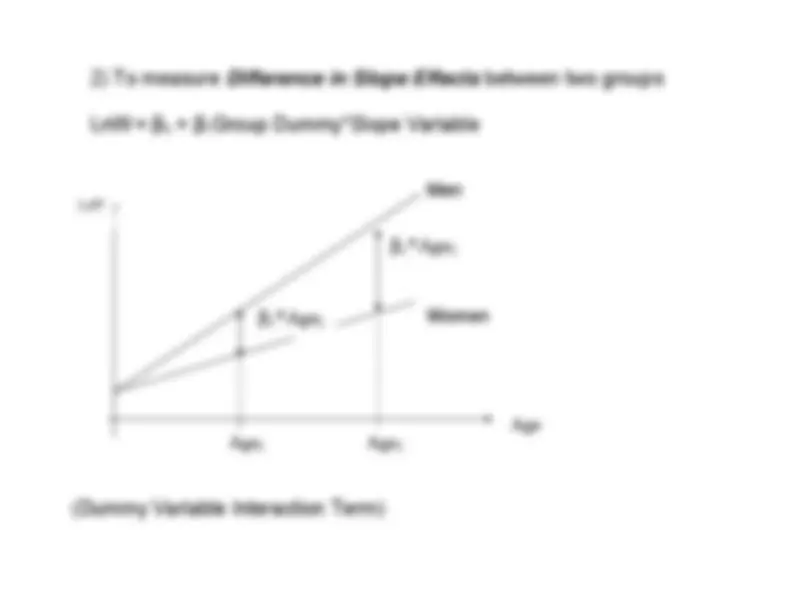

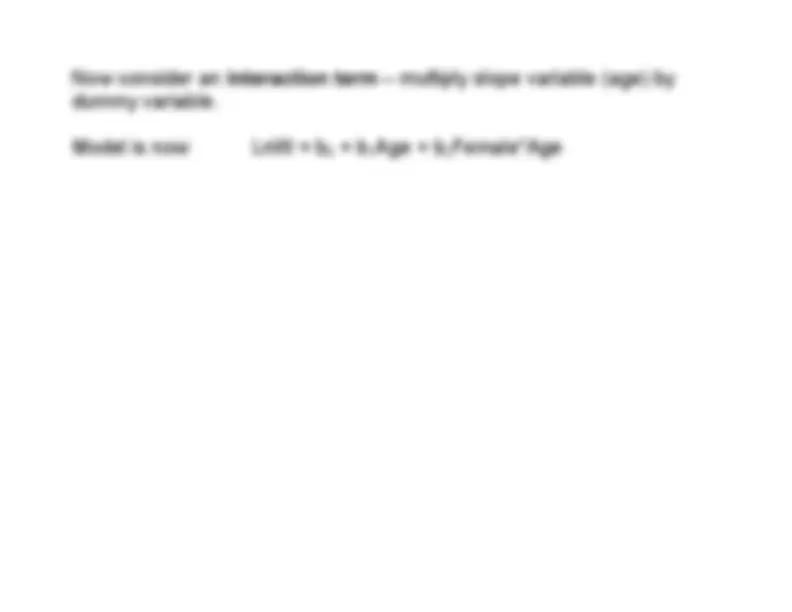
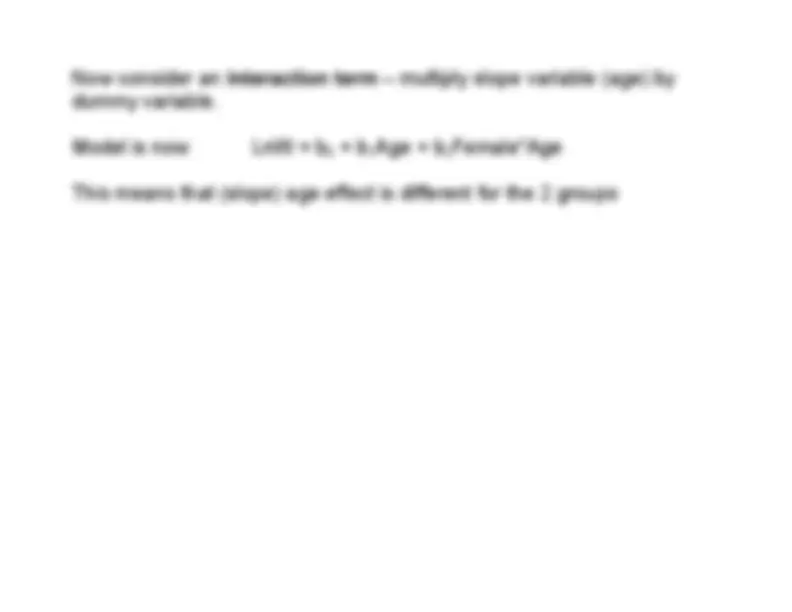
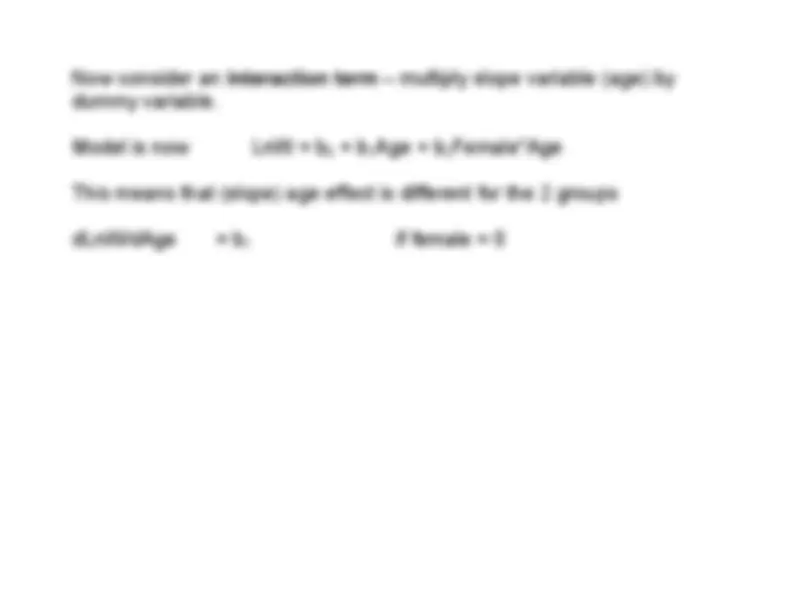
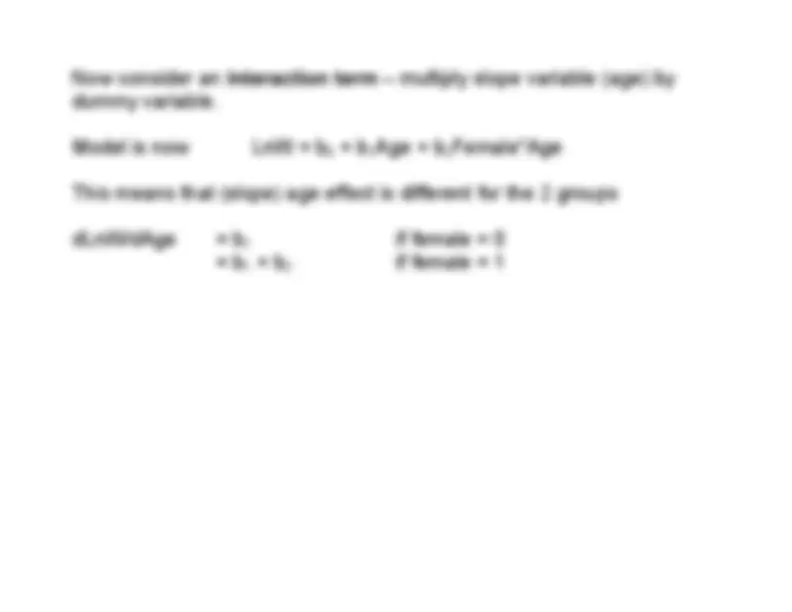
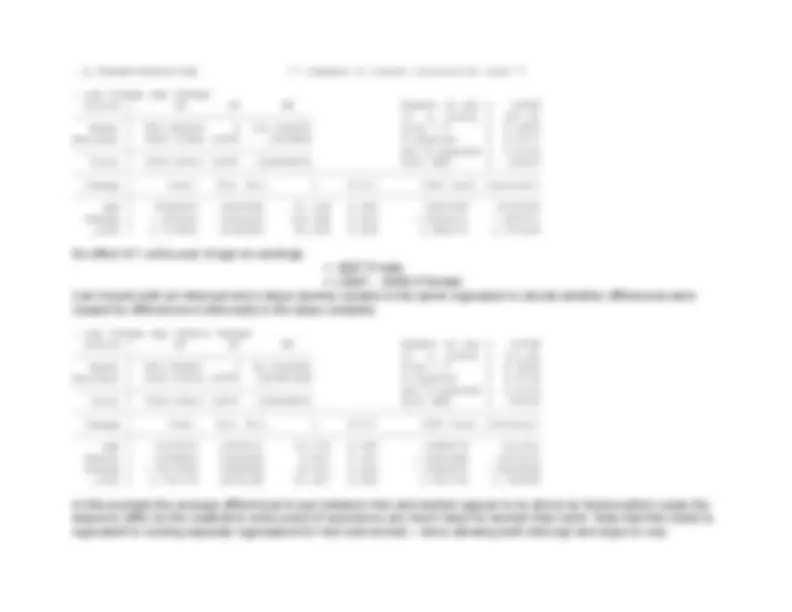
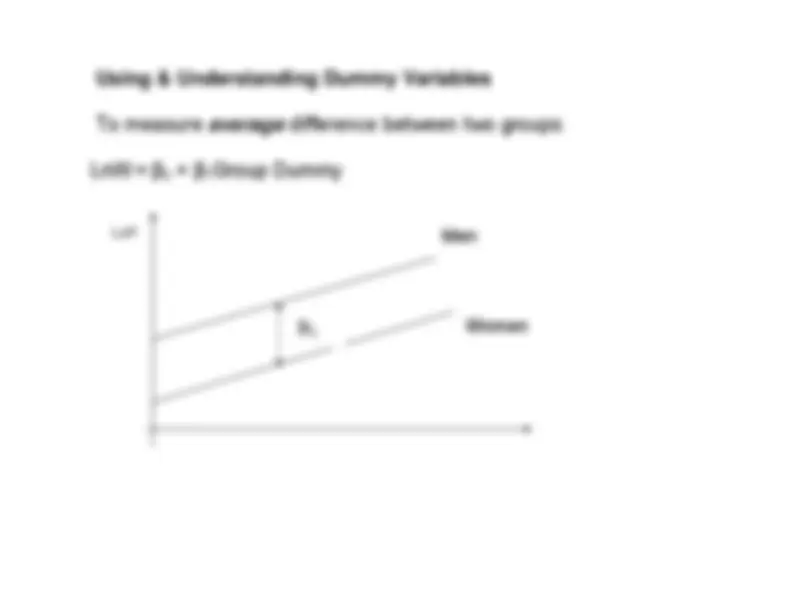
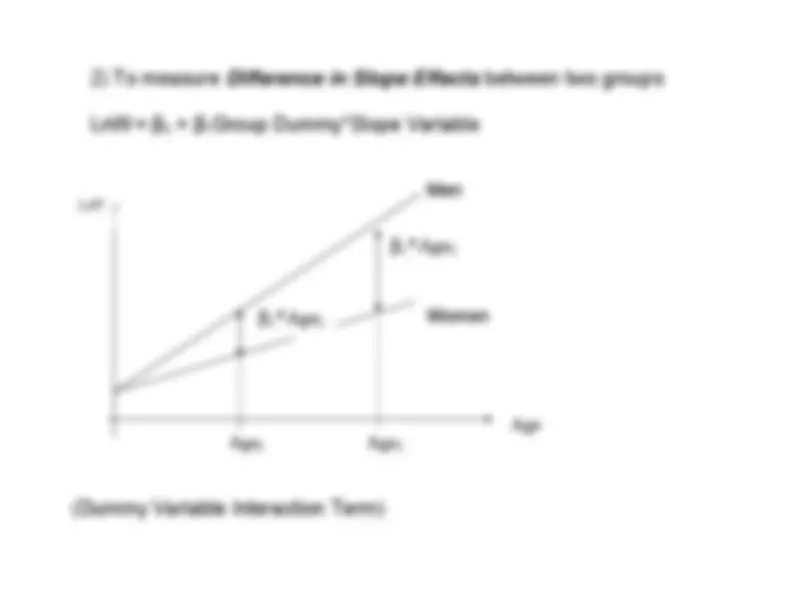
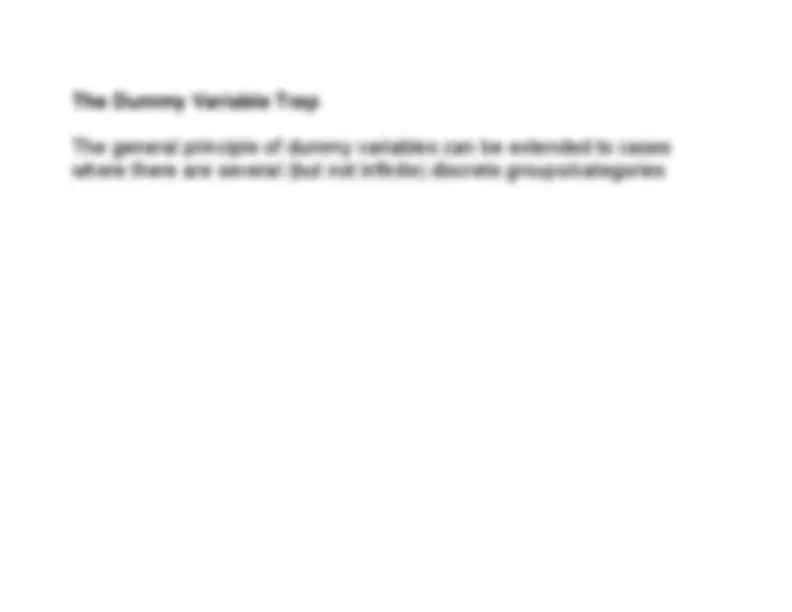


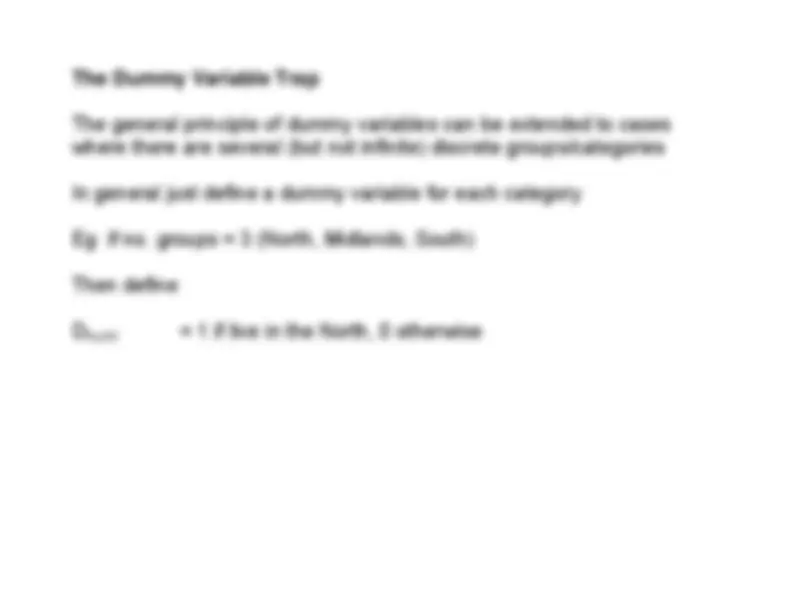

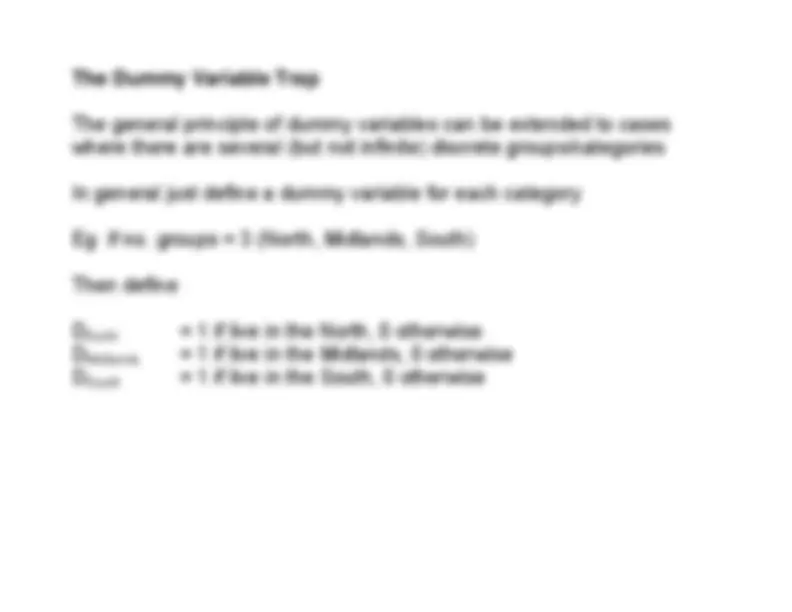
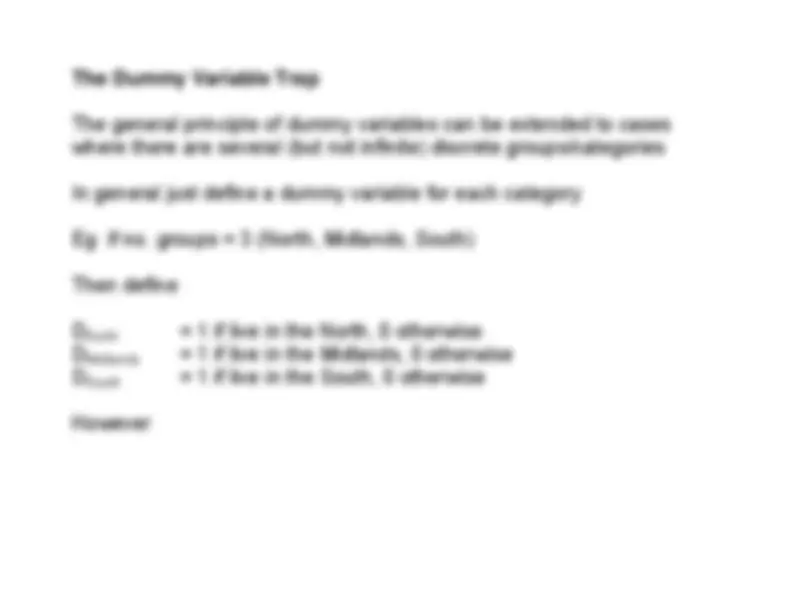
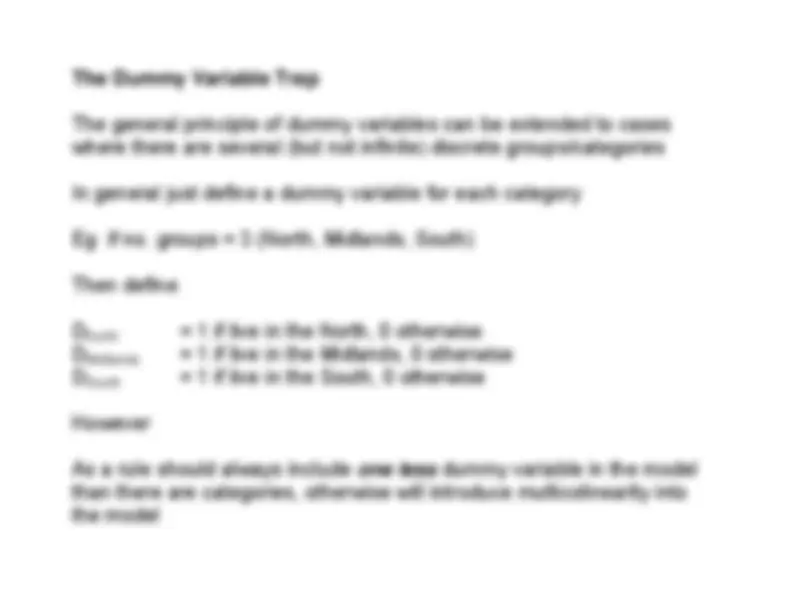


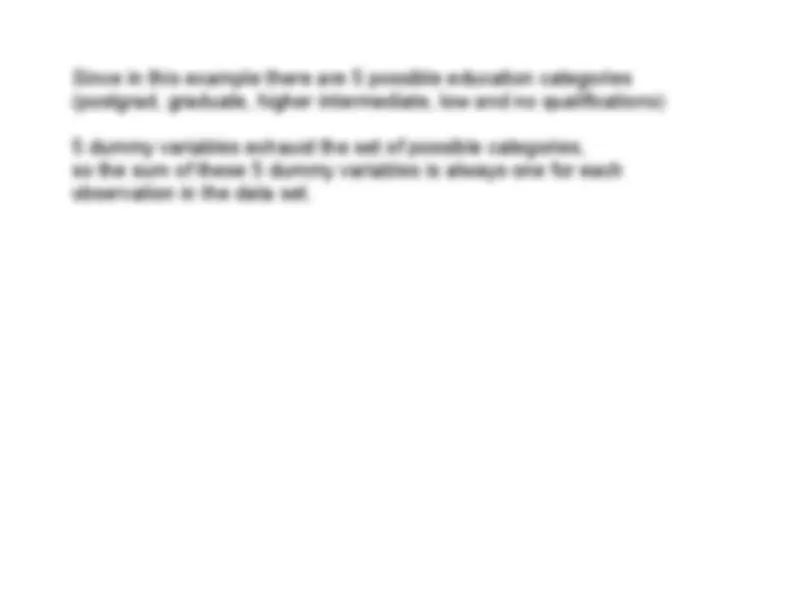
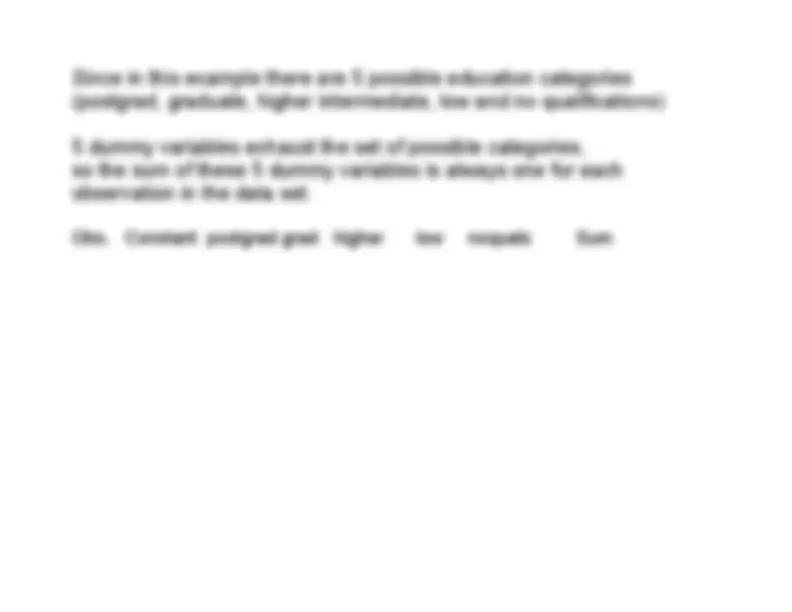
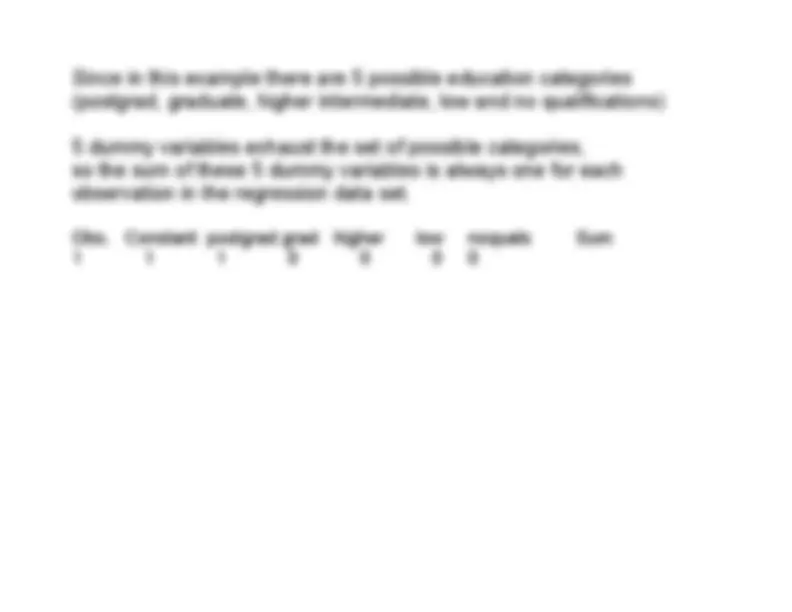
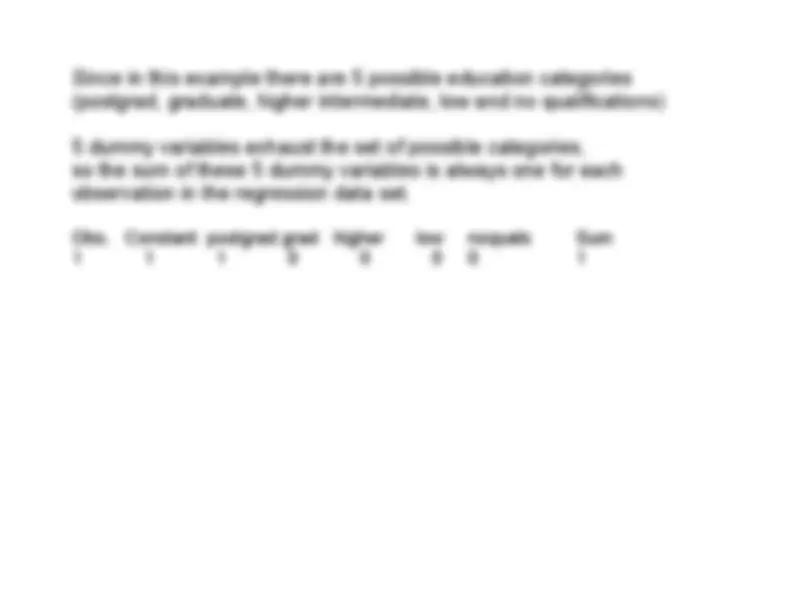
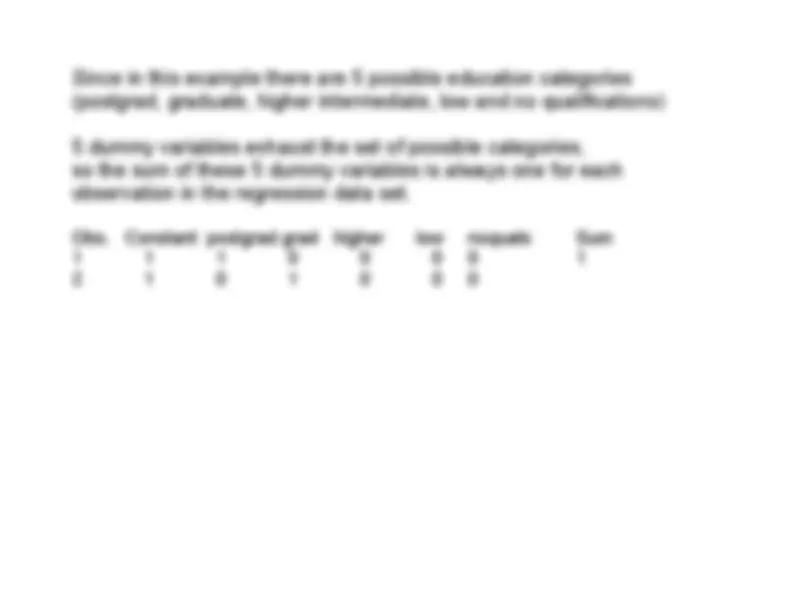
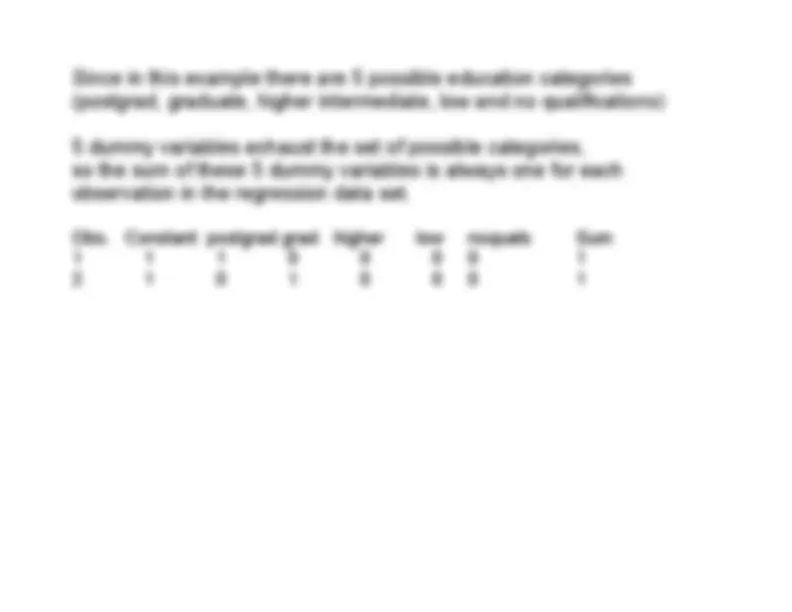
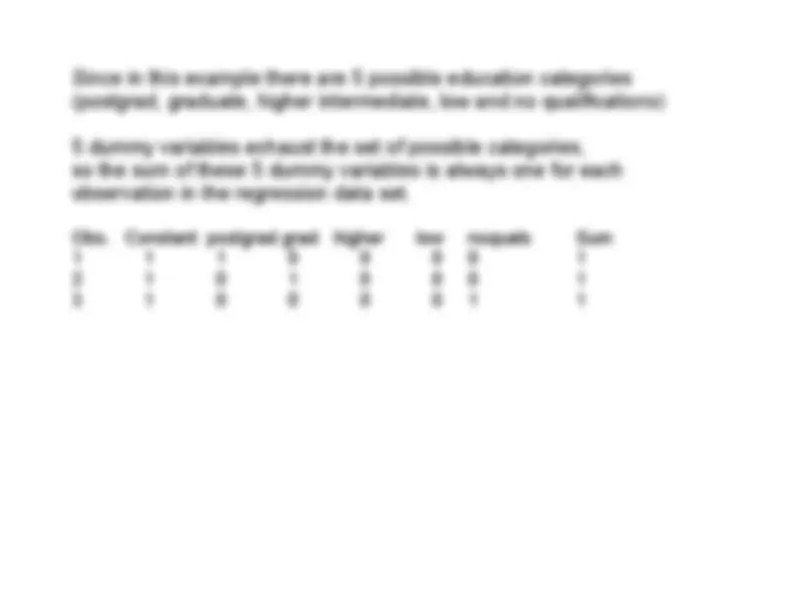
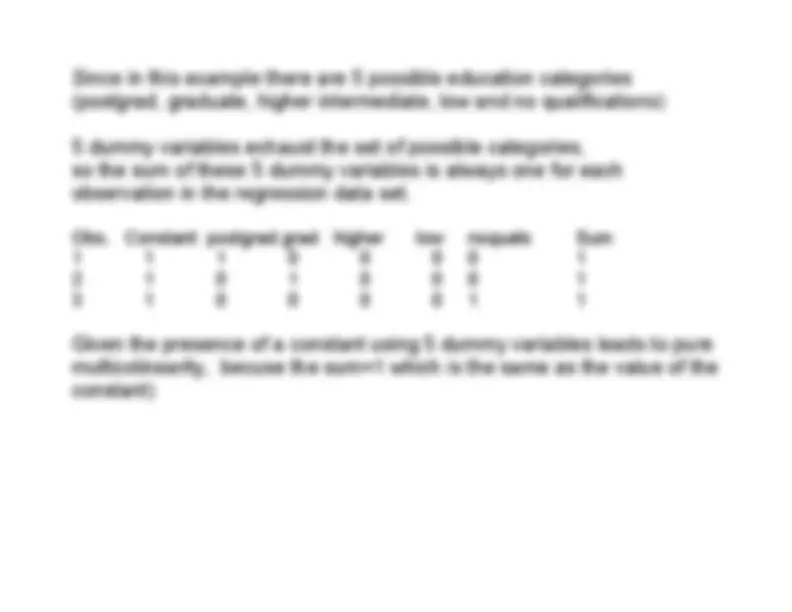
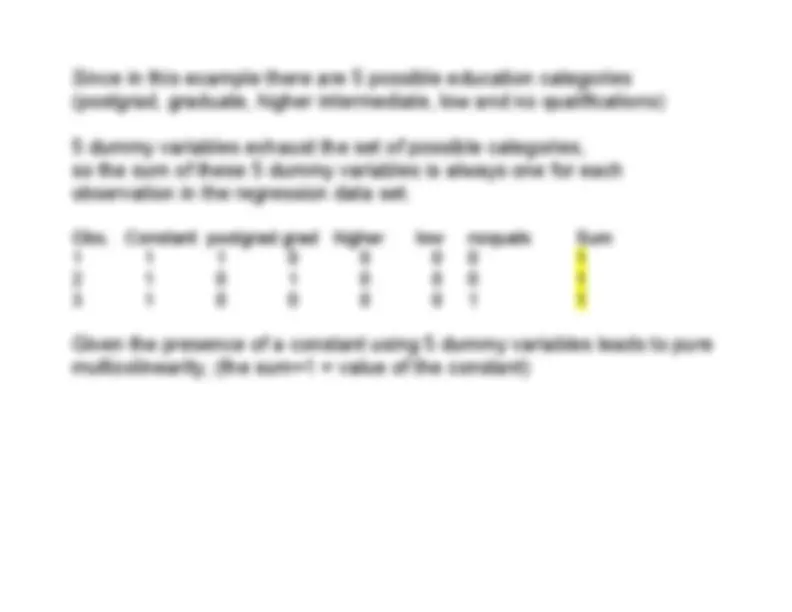
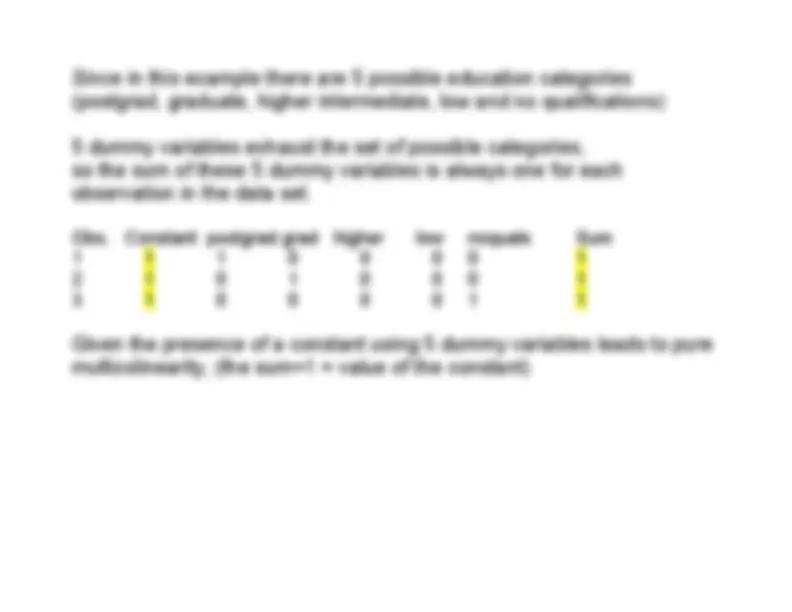
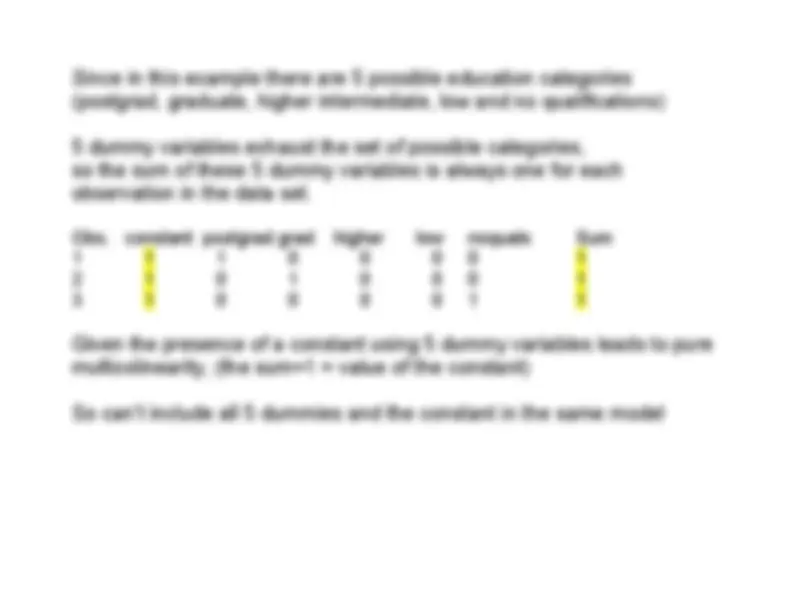
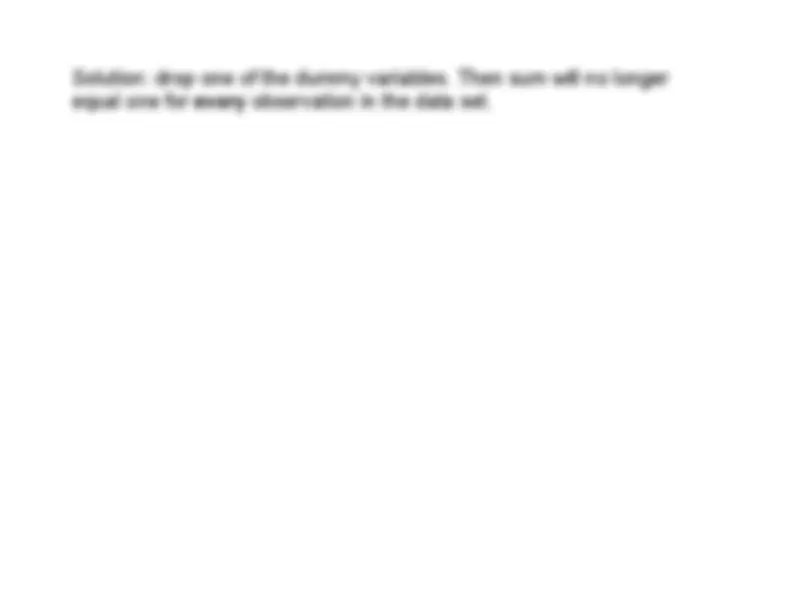
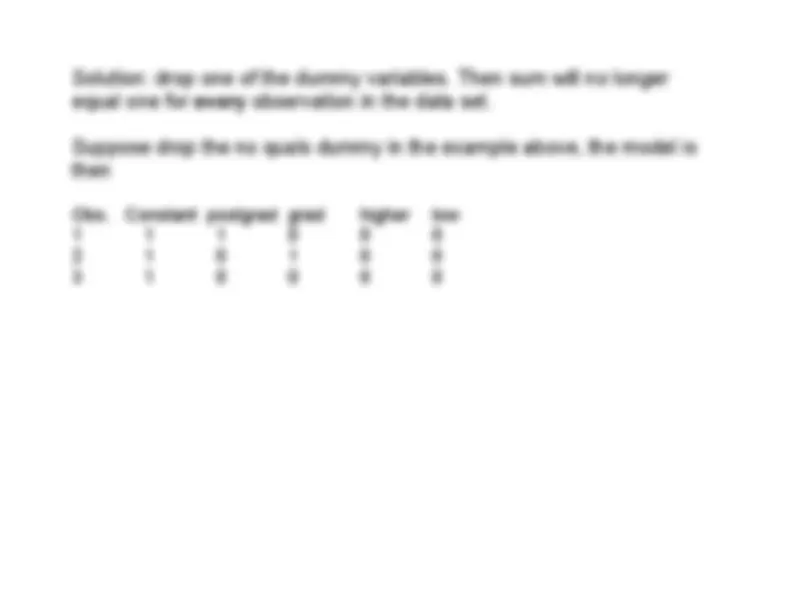
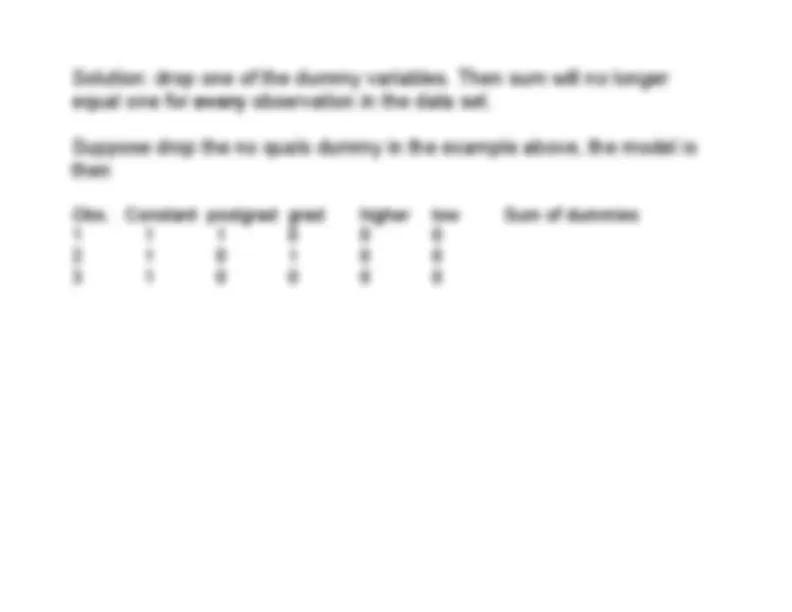
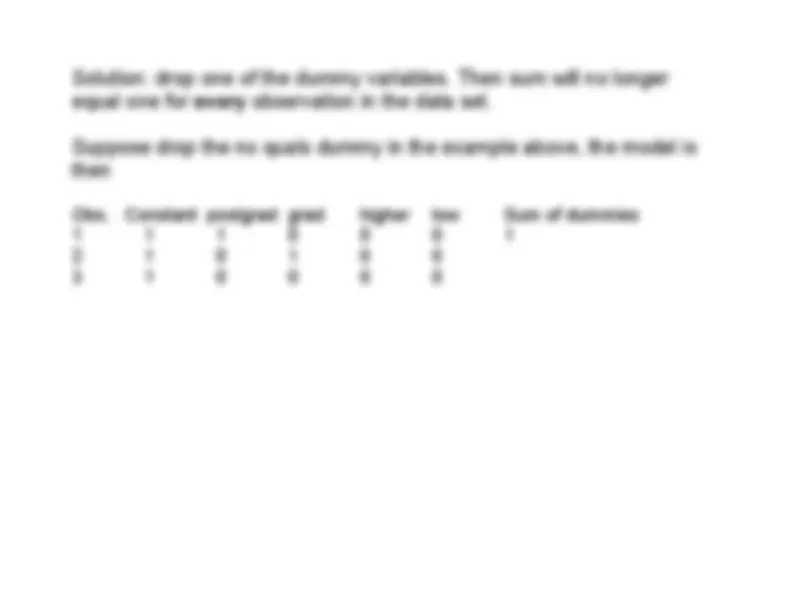
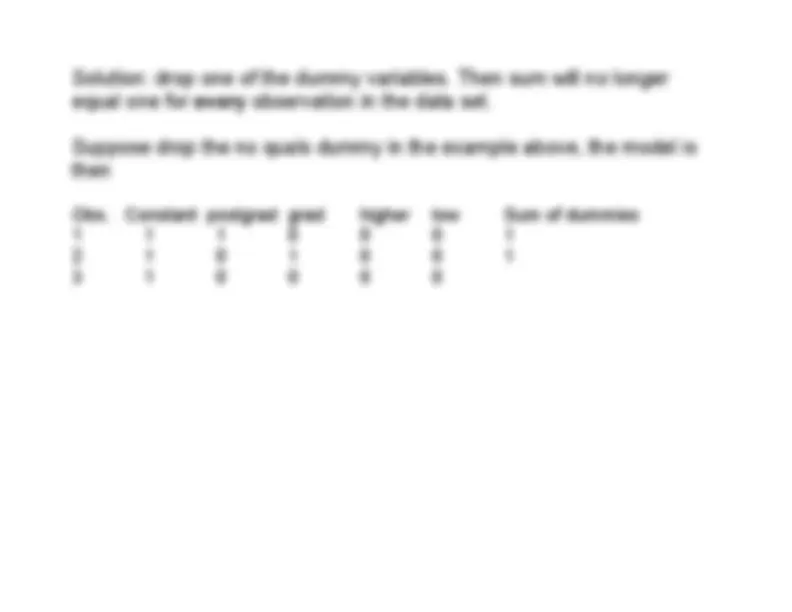
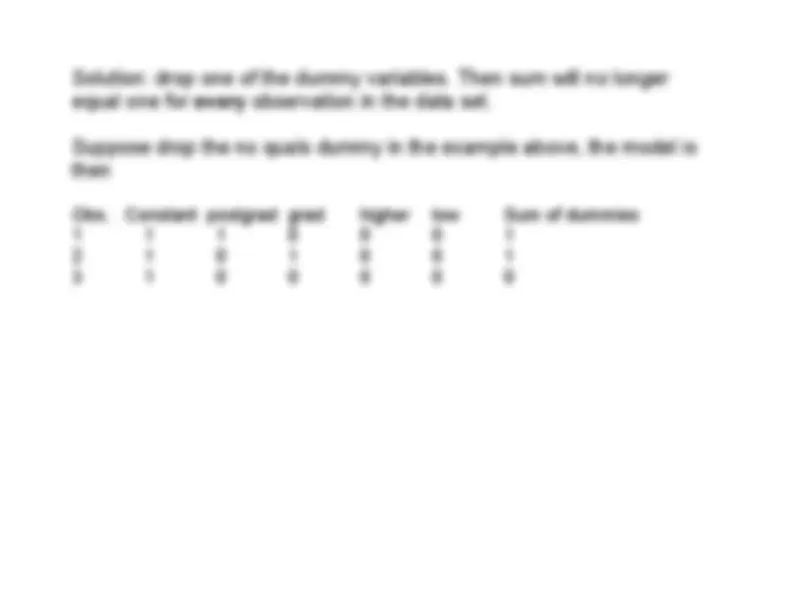
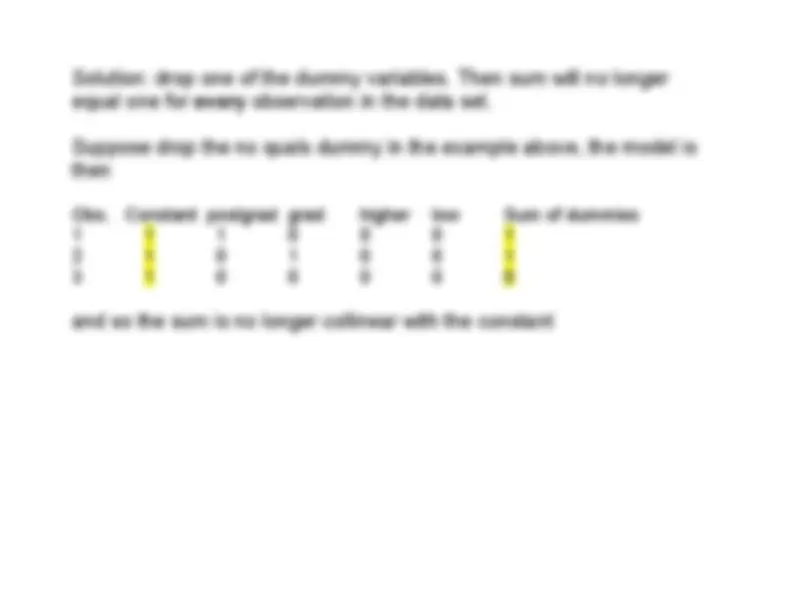
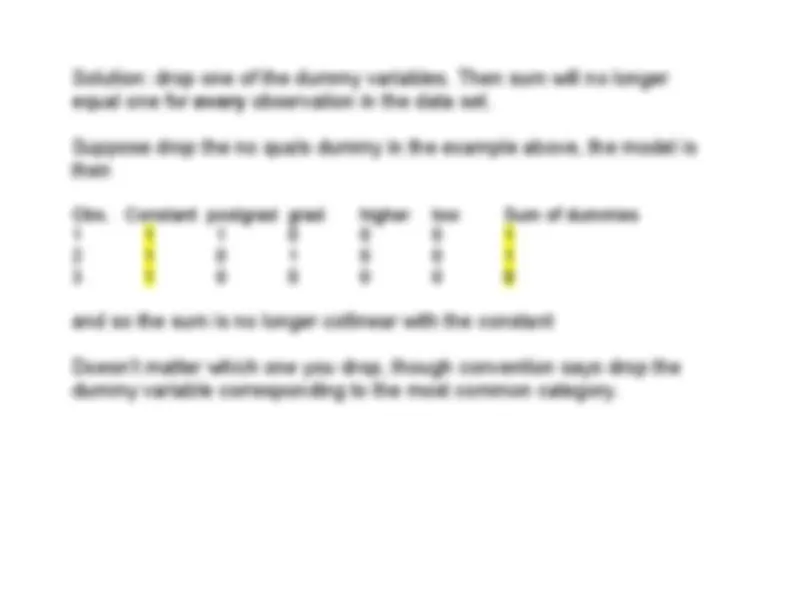
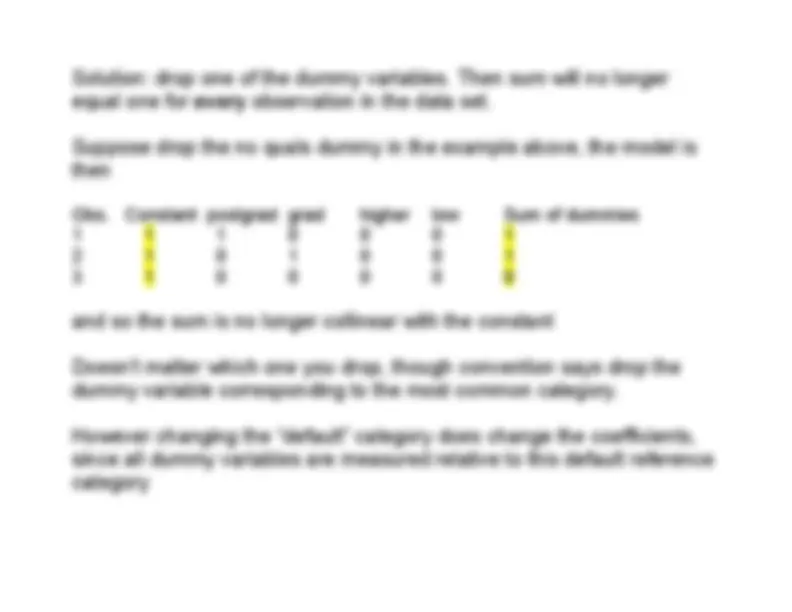
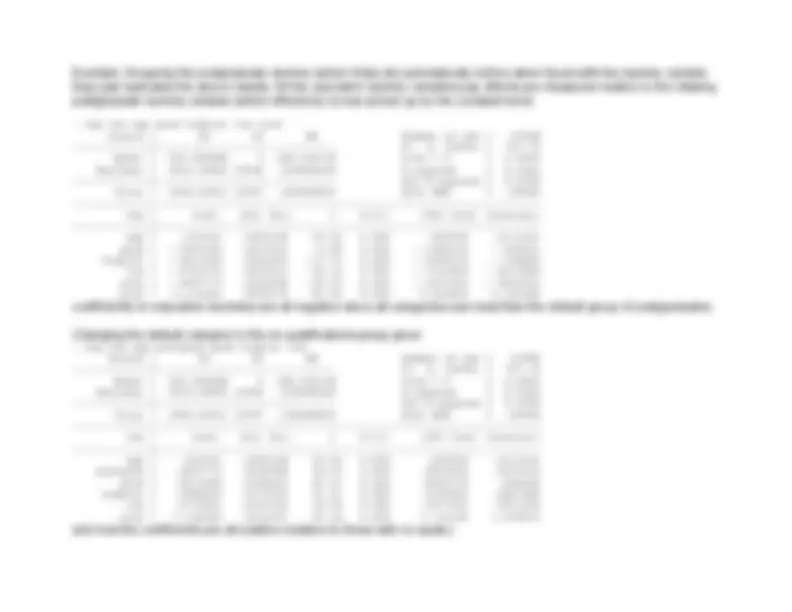
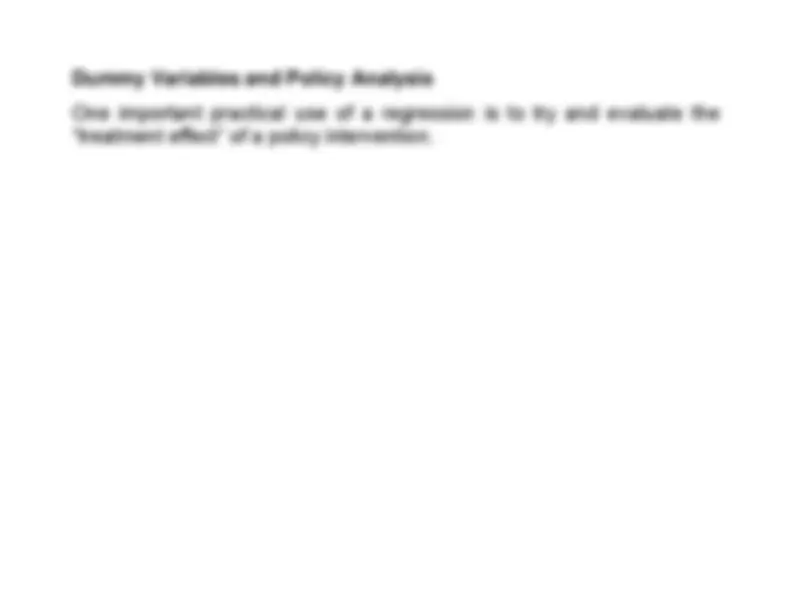
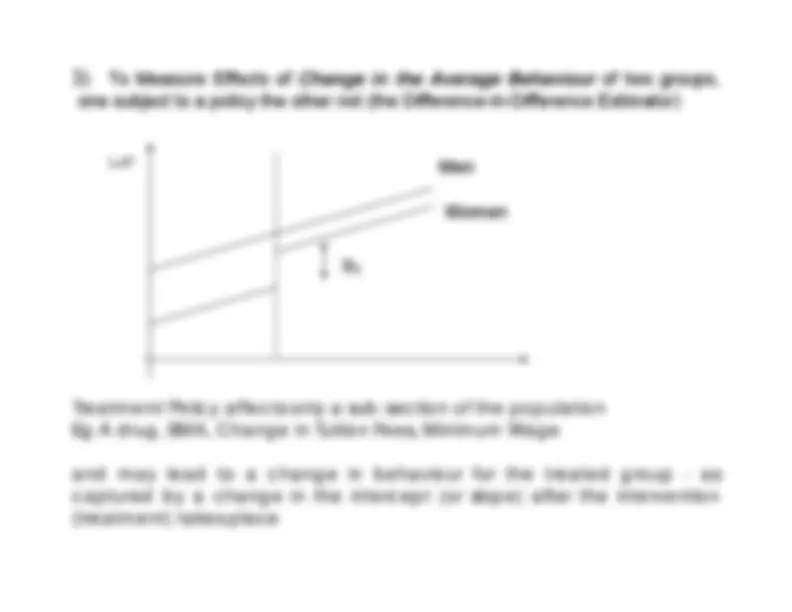
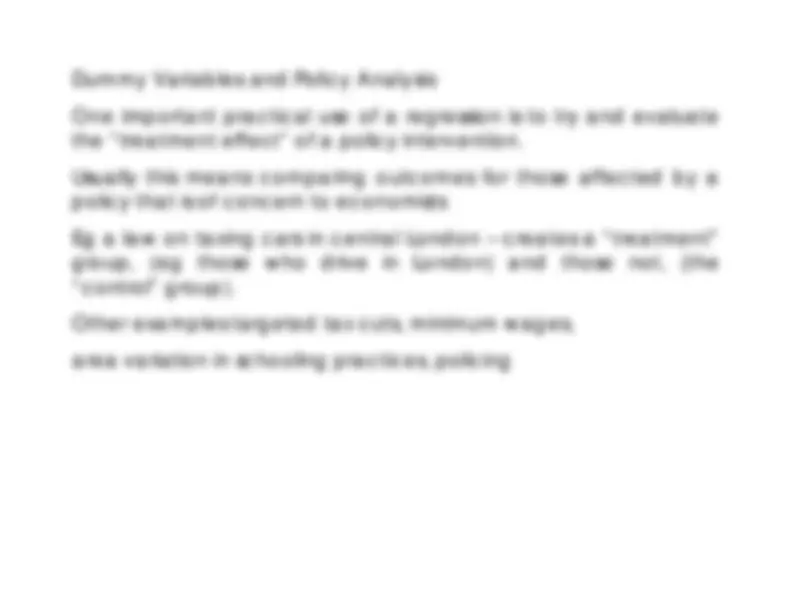


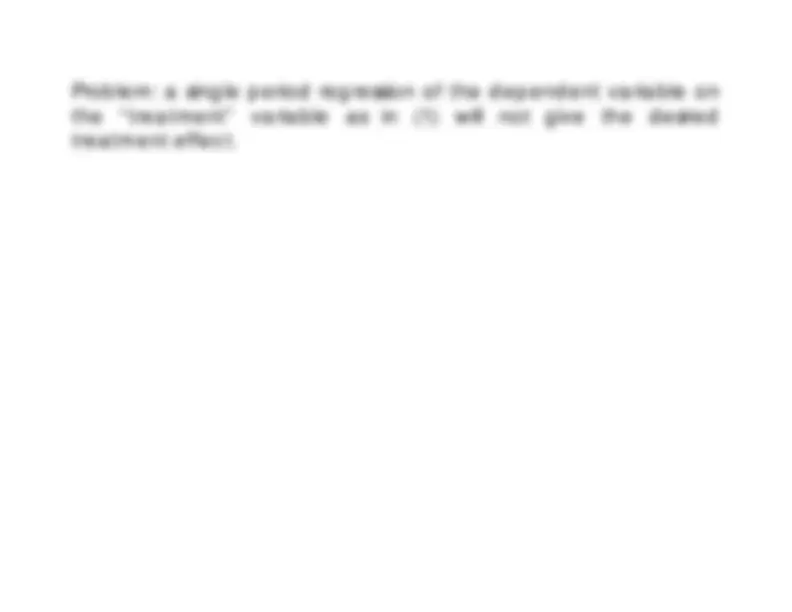
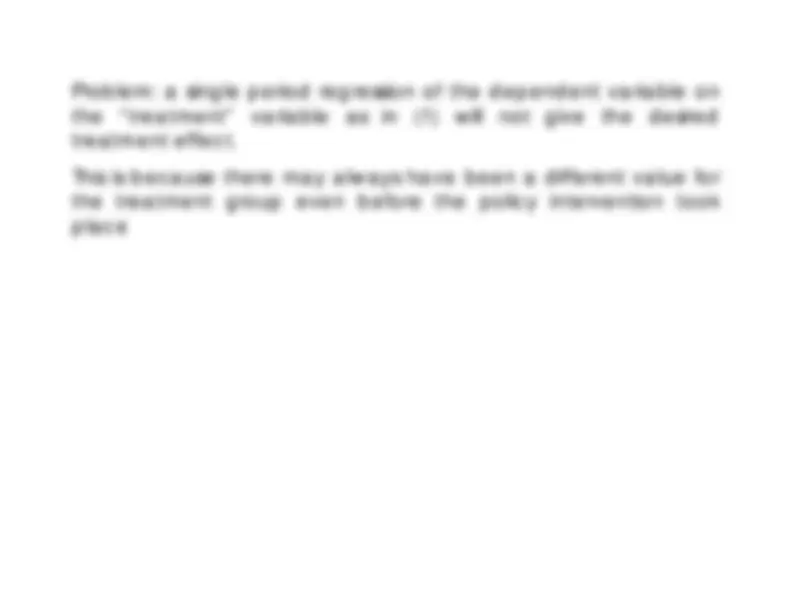
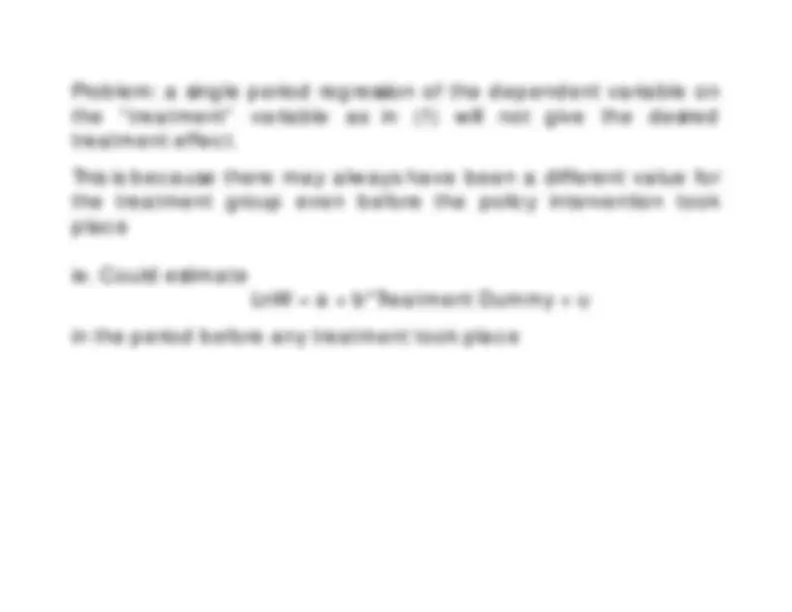
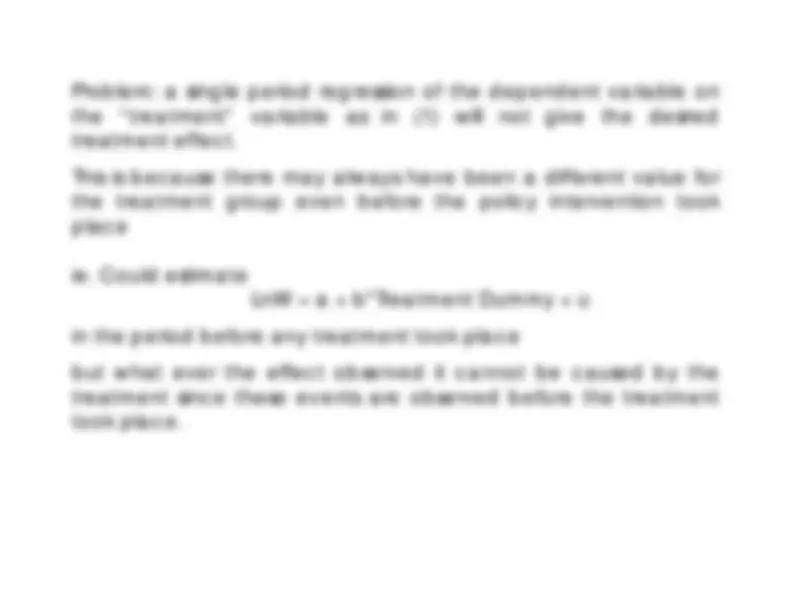
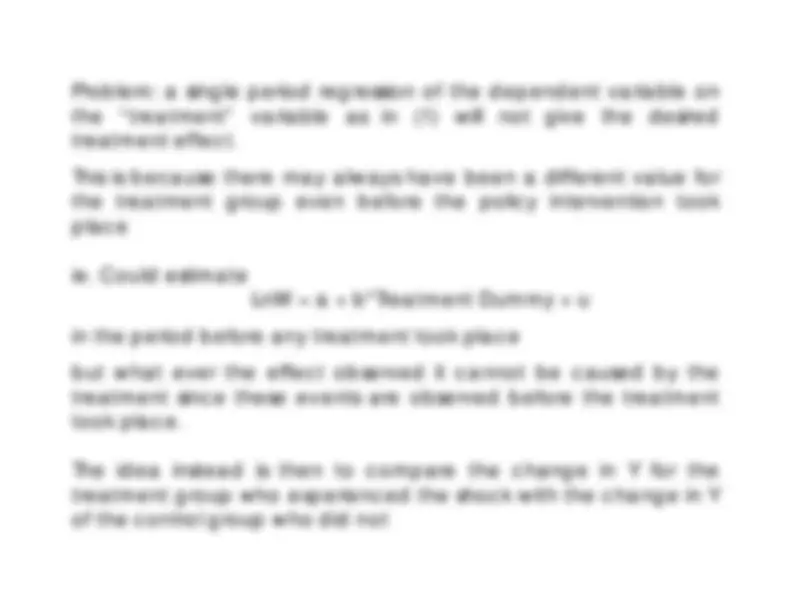
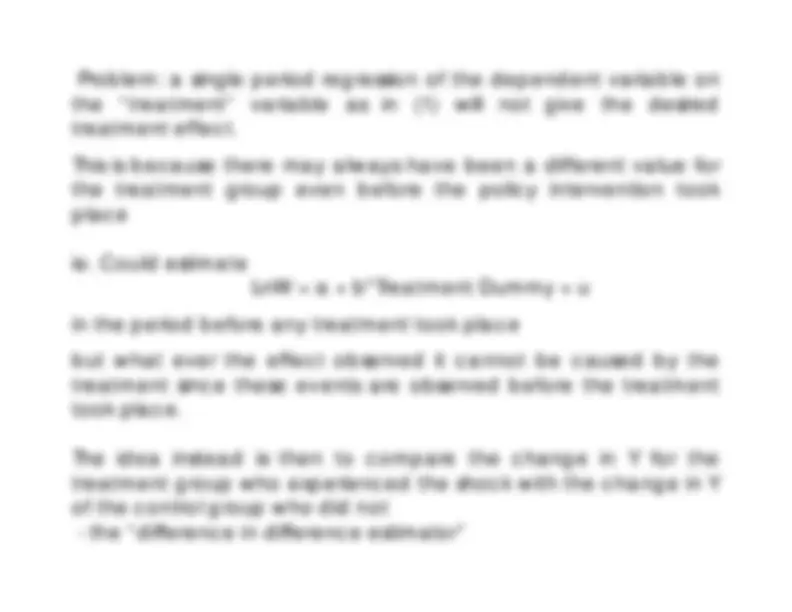
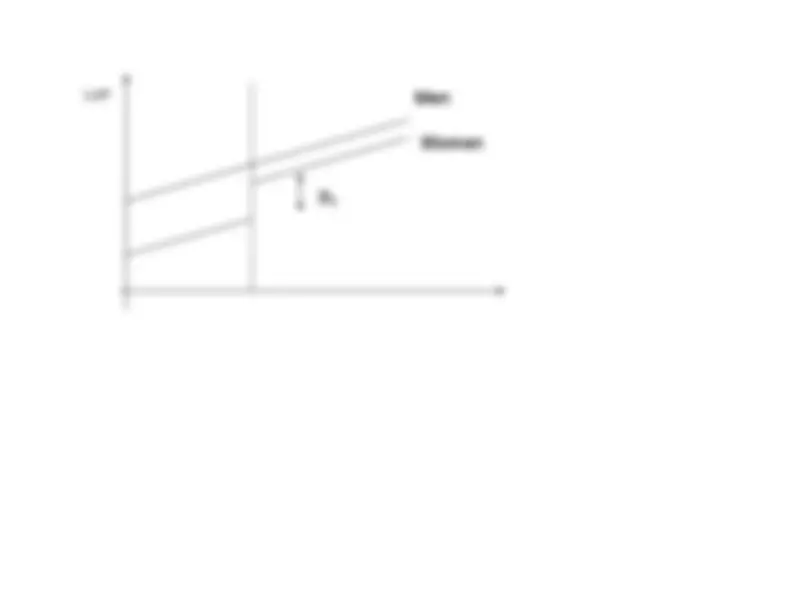


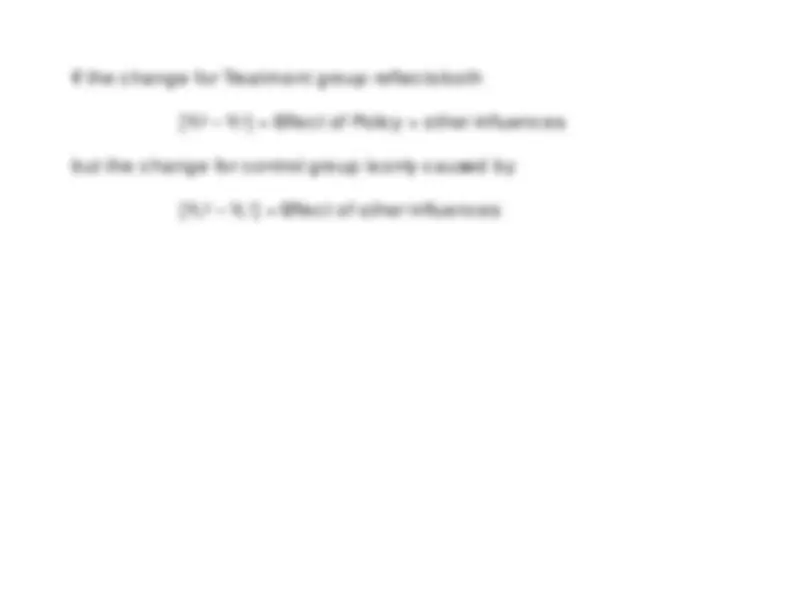
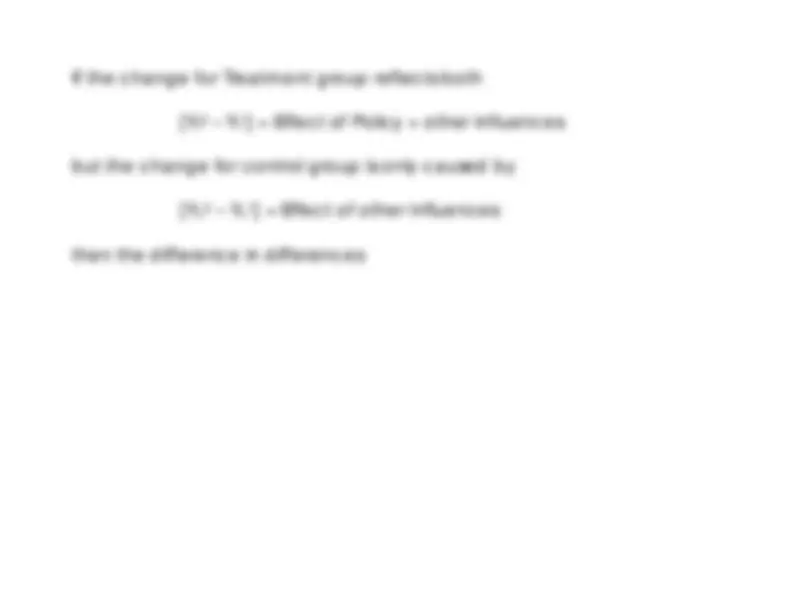
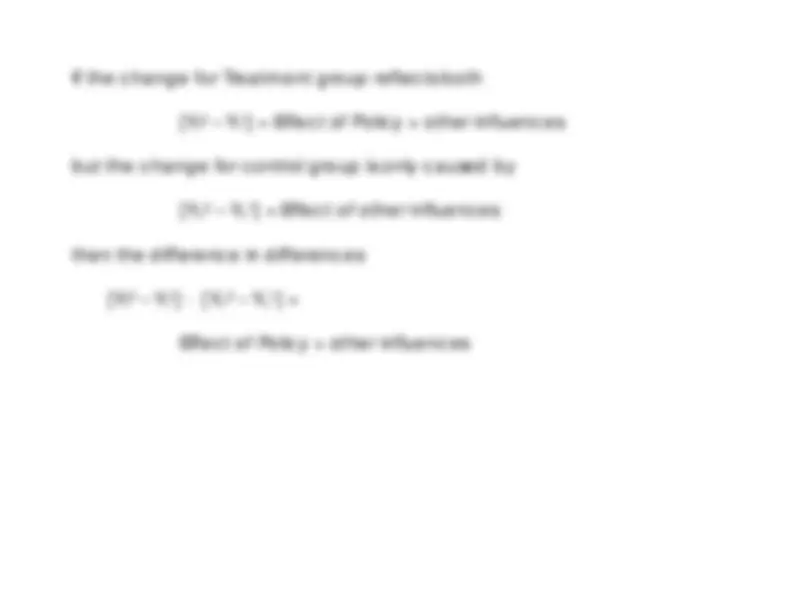
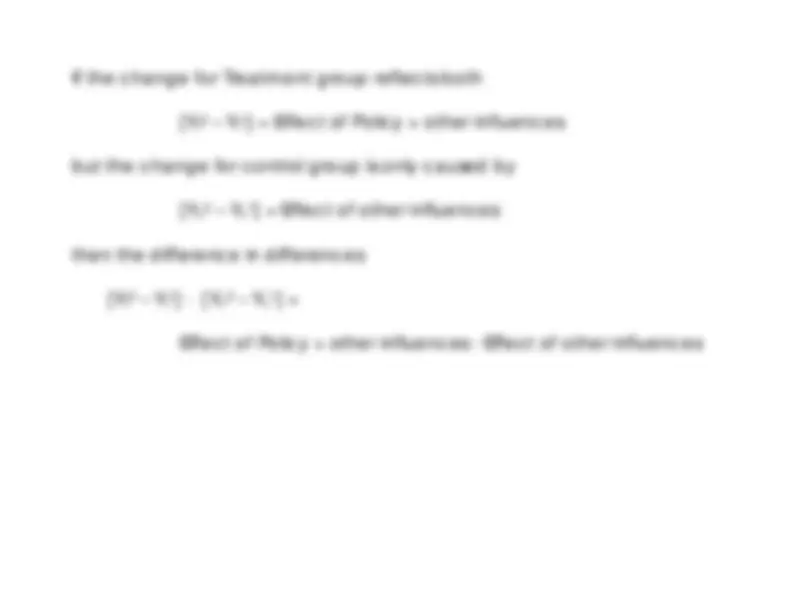
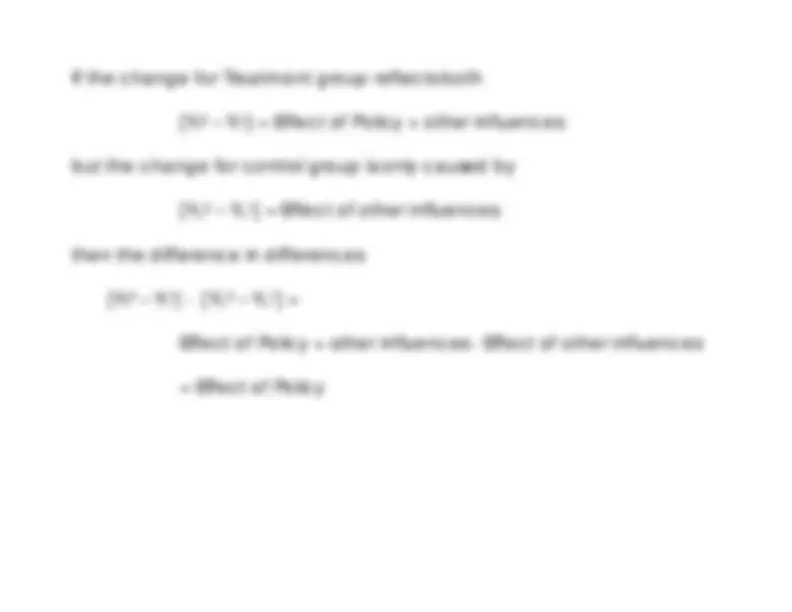
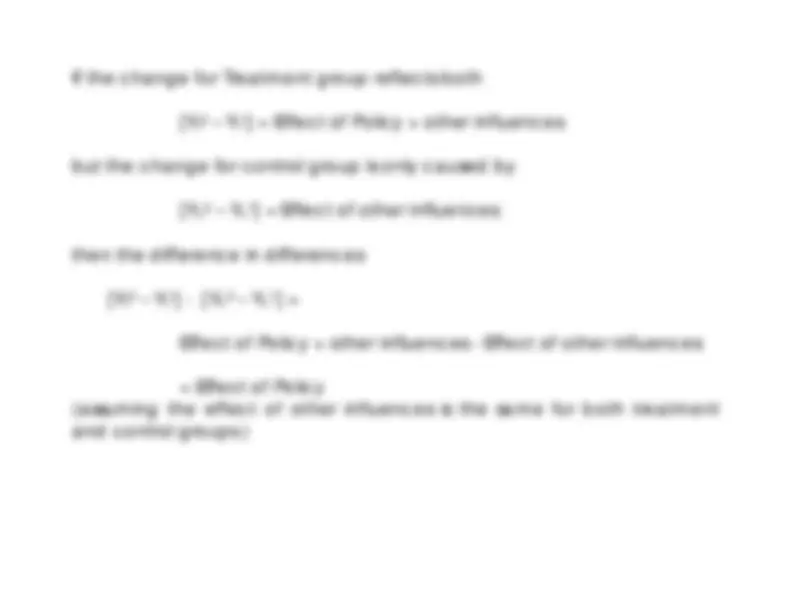
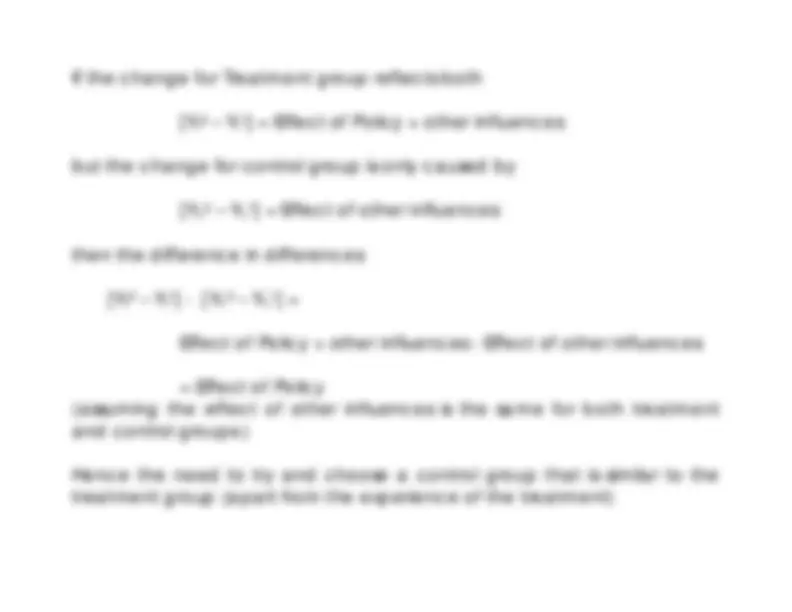
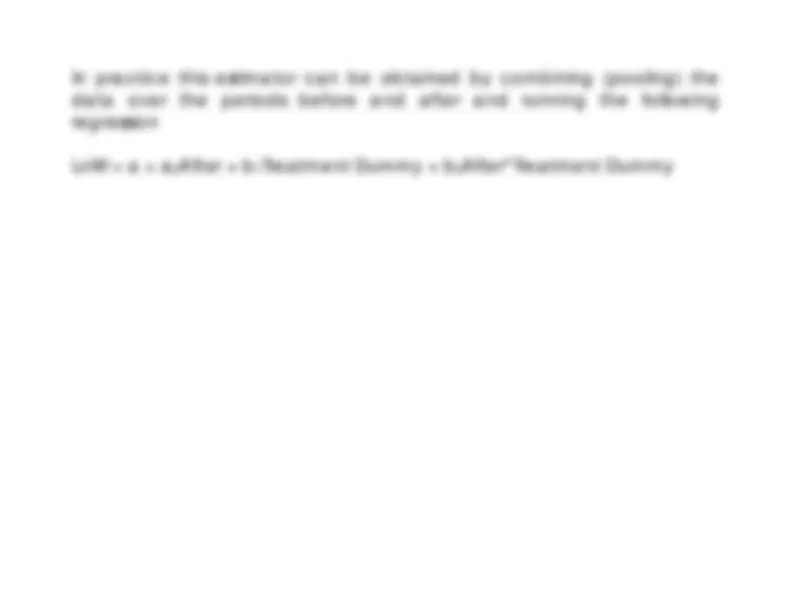
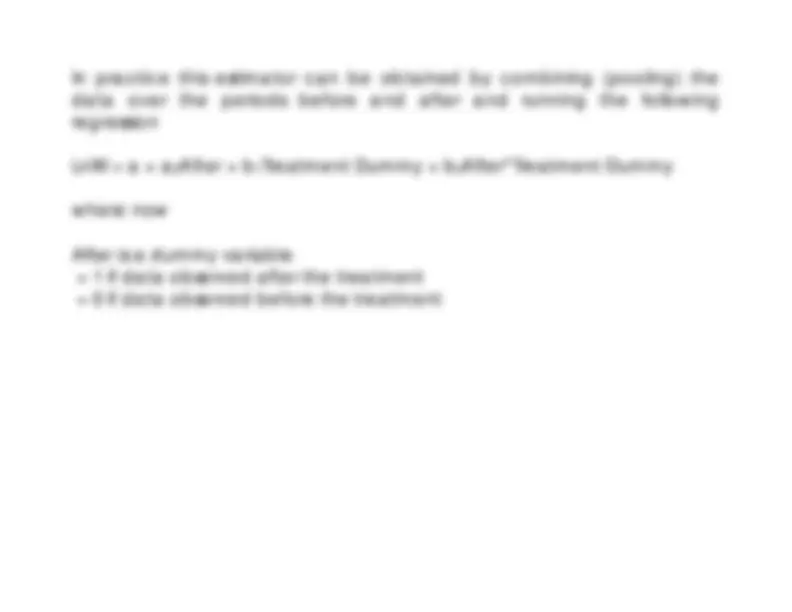
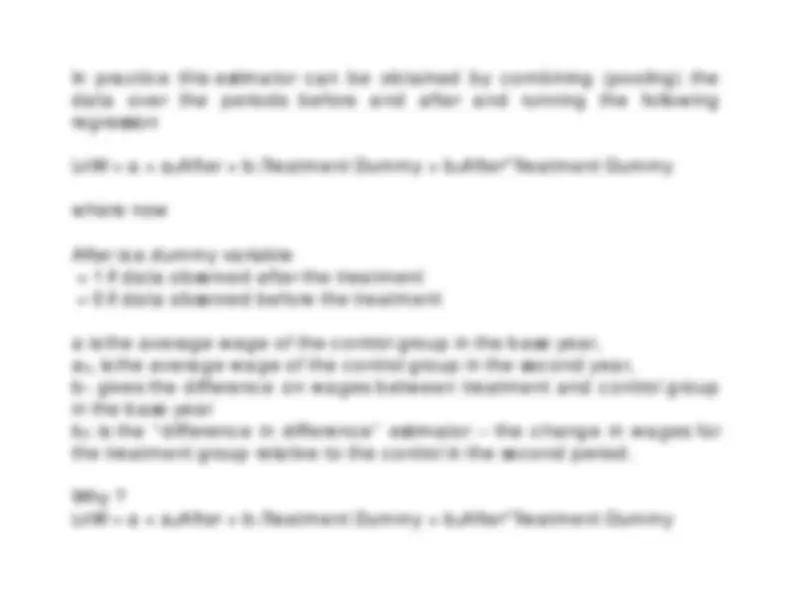
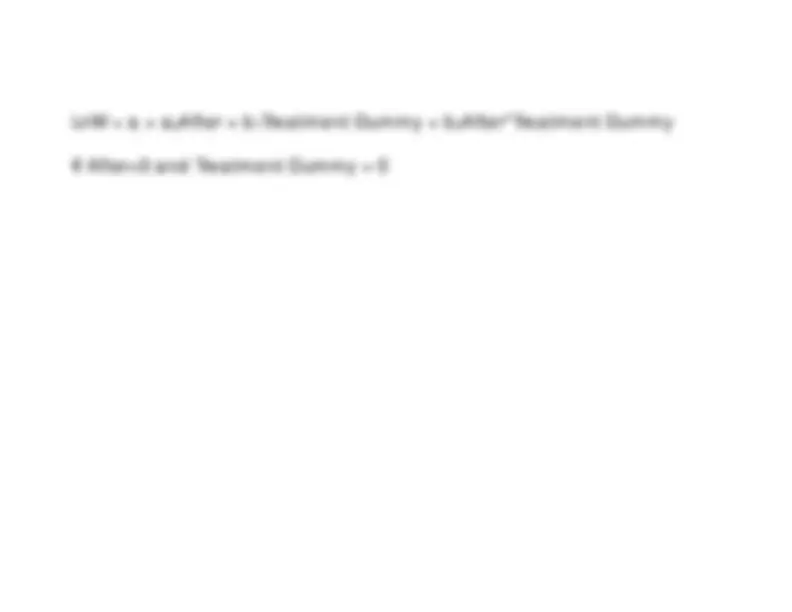
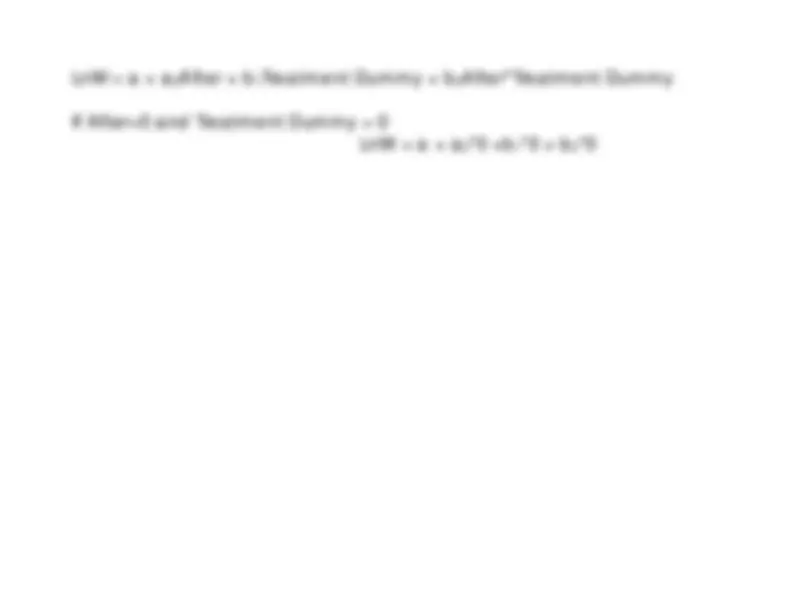
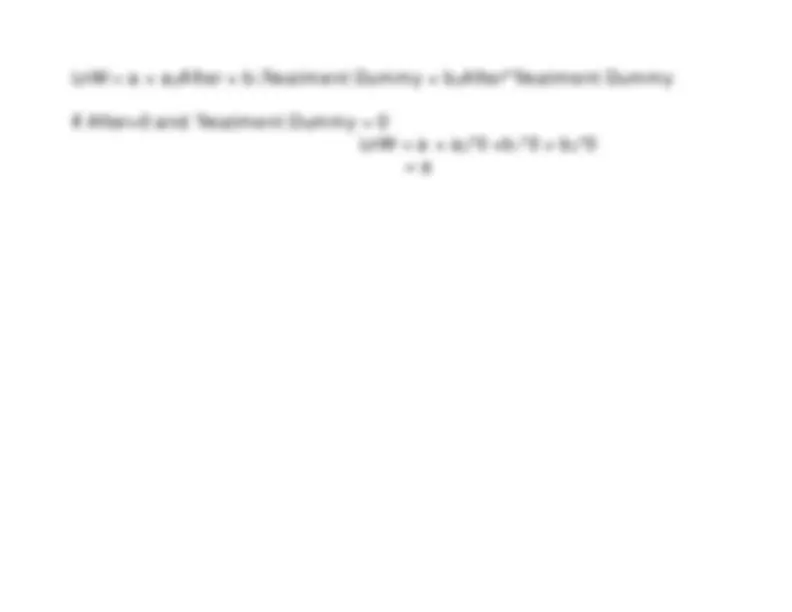
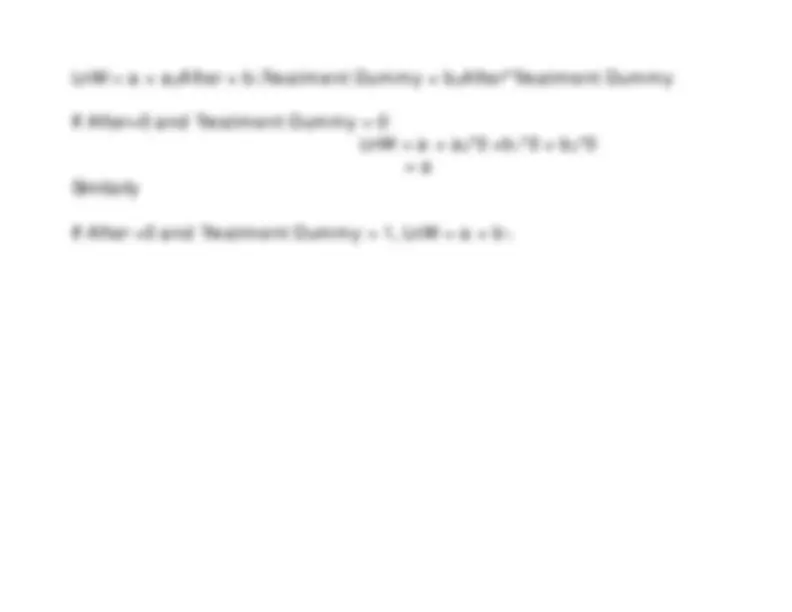
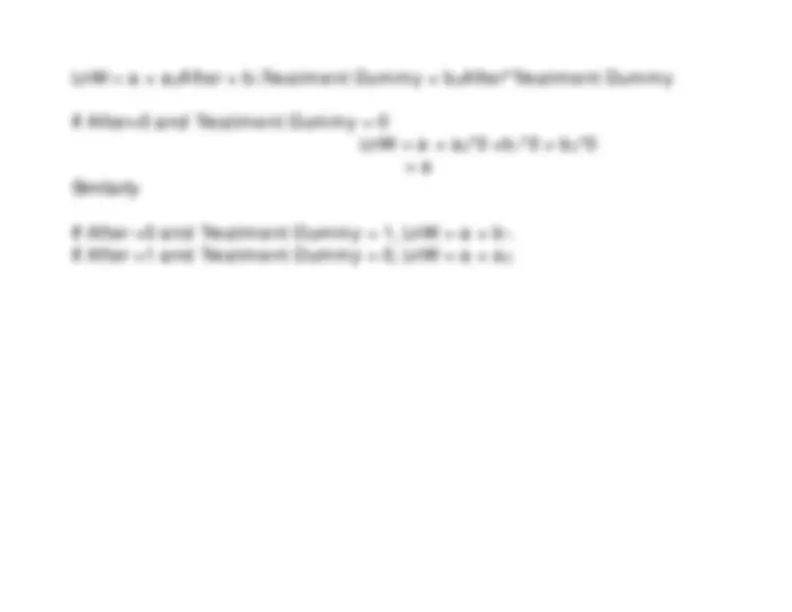
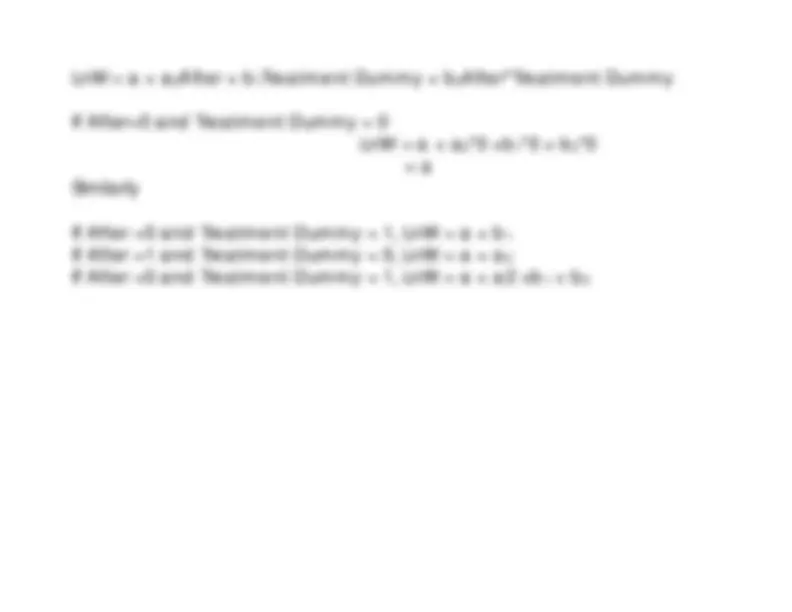


Study with the several resources on Docsity

Earn points by helping other students or get them with a premium plan


Prepare for your exams
Study with the several resources on Docsity

Earn points to download
Earn points by helping other students or get them with a premium plan
Community
Ask the community for help and clear up your study doubts
Discover the best universities in your country according to Docsity users
Free resources
Download our free guides on studying techniques, anxiety management strategies, and thesis advice from Docsity tutors
An overview of dummy variables, their role in econometrics, and how to use them to measure average differences, handle more than two discrete categories, perform policy analysis, and net out seasonality. Dummy variables are useful tools when dealing with qualitative variables that split the sample into two distinct groups.
Typology: Study notes
1 / 134

This page cannot be seen from the preview
Don't miss anything!





























































































Lecture 13. Use and Interpretation of Dummy Variables Stop worrying for 1 lecture and learn to appreciate the uses that“dummy variables” can be put to Using dummy variables to measure average differencesUsing dummy variables when more than 2 discrete categoriesUsing dummy variables for policy analysisUsing dummy variables to net out seasonality
Use and Interpretation of Dummy Variables Dummy
variables
-^ where
the^
variable
takes
only one^
of^ two
values
qualitative
rather than
quantitative
Use and Interpretation of Dummy Variables
Dummy
variables
-^ where
the^
variable
takes
only one^
of^ two
values
qualitative
rather than
quantitative
In practice this means interested in variables that split the sampleinto two distinct groups in the following wayD = 1^
if the criterion is satisfied
Use and Interpretation of Dummy Variables
Dummy
variables
-^ where
the^
variable
takes
only one^
of^ two
values
qualitative
rather than
quantitative
In practice this means interested in variables that split the sampleinto two distinct groups in the following wayD = 1^
if the criterion is satisfied D = 0^
if not
Use and Interpretation of Dummy Variables
Dummy
variables
-^ where
the^
variable
takes
only one^
of^ two
values
qualitative
rather than
quantitative
In practice this means interested in variables that split the sampleinto two distinct groups in the following wayD = 1^
if the criterion is satisfied D = 0^
if not Eg. Male/Femaleso that the dummy variable “Male” would be coded1 if male
Use and Interpretation of Dummy Variables
Dummy
variables
-^ where
the^
variable
takes
only one^
of^ two
values
qualitative
rather than
quantitative
In practice this means interested in variables that split the sampleinto two distinct groups in the following wayD = 1^
if the criterion is satisfied D = 0^
if not Eg. Male/Femaleso that the dummy variable “Male” would be coded1 if maleand 0 if female
Example: Suppose we are interested in the gender pay gap
Example: Suppose we are interested in the gender pay gapModel is
LnW = b
Male 2
where Male = 1 or 0
Example: Suppose we are interested in the gender pay gapModel is
LnW = b
Male 2
where Male = 1 or 0For men therefore the predicted wage
bAge bb
Example: Suppose we are interested in the gender pay gapModel is
LnW = b
Male 2
where Male = 1 or 0For men therefore the predicted wage
bAge bb
For women
bAge bb LnW^ women
Remember that OLS predicts the mean or average value of thedependent variable(see lecture 2)So in the case of a regression model with log wages as thedependent variable, LnW = b
Male 2
the average of the fitted values equals the average of log wages
Remember that OLS predicts the mean or average value of thedependent variable(see lecture 2)
Remember that OLS predicts the mean or average value of thedependent variable(see lecture 2)So in the case of a regression model with log wages as thedependent variable, LnW = b
Male 2
the average of the fitted values equals the average of log wages
So the (average) difference in pay between men and women isthenmenLnW^
women